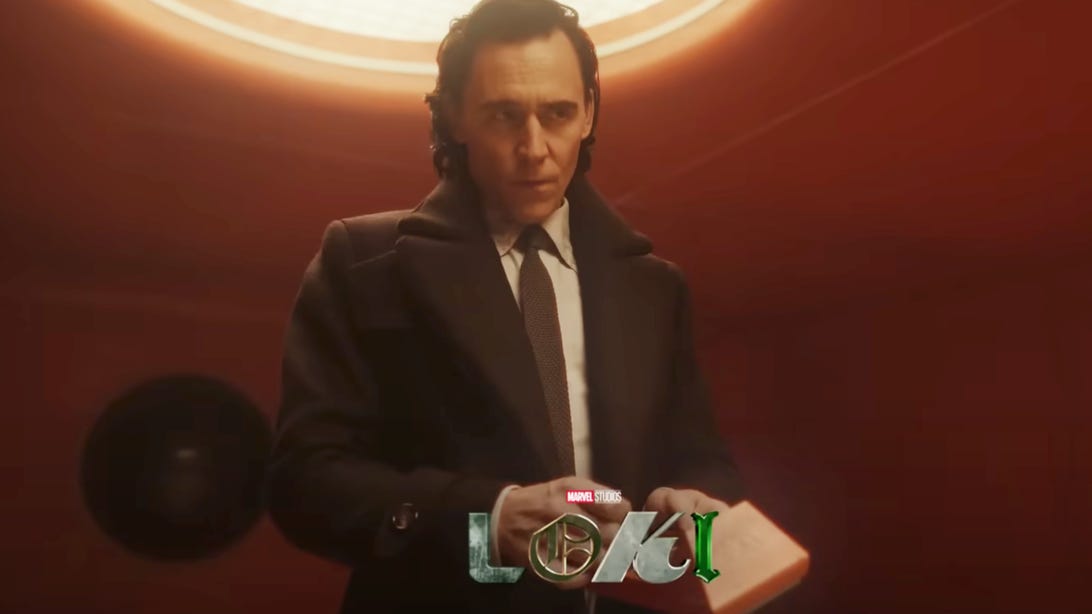Read more of this story at Slashdot.
Ronald.phillips
Shared posts
EU Opens Antitrust Probe Into Broadcom's $61 Billion VMware Bid
Khronos Group Finalizes Vulkan Video API 1.0, Intros H.264 & H.265 Decode

The Vulkan API has recently seen an addition to its recent update, version 1.3.238, adding video extensions in the way of an encoder/decoder API that becomes a separate entity under the newly forged Vulkan "umbrella." The concept for Vulkan Video has been in beta since the first part of 2021. The Khronos Group, creators of the Vulkan API and now Vulkan Video API 1.0, have concluded that the product is ready for public use.
The Khronos Group rolls out Vulkan Video after almost two years of the API in beta
The new Vulkan Video 1.0 extensions — four primary extensions — are now available. The new new extensions are as follows:
- VK_KHR_video_queue: standard APIs for all video coding operations.
- VK_KHR_video_decode_queue: standard APIs for all video decode operations.
- VK_KHR_video_decode_h264: H.264 decode-specific capabilities and parameters.
- VK_KHR_video_decode_h265: H.265 decode-specific capabilities and parameters.
The last two video decoder extensions, H.264 and H.265, are now labeled "KHR" extensions, whereas, at one point, they were coded with "EXT" extensions. Michael Larabel of the website Phoronix notes that extensions based on AV1 or VP9 video acceleration are missing from the Vulkan Video 1.0, as they were being considered to be expanding into the new API. It is surprising as AV1 video encoding and decoding are a mainstay in almost every new graphics card in production.
Included in today's new introduction of Vulkan Video, the API received bug fixes and further clarifications to the driver, now in its new 1.3.238 version. The Mesa Vulkan integration has also been altered recently to include Vulkan Video for both Intel Arc graphics and AMD Radeon GPUs. It is anticipated that the new Vulkan Video will be primed for full use within the two company's hardware in the coming months.
Additionally, NVIDIA released a new Linux driver, version 525.47.04, which adds the latest encoding and decoding API, which will support the company's current line of RTX 40 series "Ada Lovelace" graphics cards. NVIDIA will also receive additional extensions not seen in Intel or AMD's hardware.
- VK_EXT_opacity_micromap
- VK_NV_copy_memory_indirect
- VK_NV_memory_decompression
- VK_NV_optical_flow
- VK_NV_ray_tracing_invocation_reorder

As you can see from the extensions above, several are marked "NV," standing for NVIDIA, which is one of the few ways we can distinguish the different companies and their corresponding hardware, whether it be from reports, leaks, rumors, or press releases published.
The post Khronos Group Finalizes Vulkan Video API 1.0, Intros H.264 & H.265 Decode by Jason R. Wilson appeared first on Wccftech.
Microsoft DirectStorage 1.1 API Tested With Sabrent Rocket 4 Plus-G PCIe Gen4 SSD Running Latest Phison IO+ Firmware

First benchmarks of Microsoft's DirectStorage 1.1 API running on Sabrent's Rocket 4 Plus-G PCIe Gen4 SSD have been published by Compusemble.
Microsoft DirectStorage 1.1 API Tested On Sabrent's Rocket 4 Plus-G PCIe Gen4 SSD
Back in August, Sabrent introduced its brand new Rocket Plus-G PCIe Gen4 SSDs for PC & console gamers. These SSDs are specifically optimized for Microsoft's DirectStorage API which aims to bring console-level loading times to the PC platform. Microsoft also introduced GPU decompression with its v1.1 of the DirectStorage API which will be shipping with the latest AAA titles such as Forspoken in early 2023.

Upon initial release, DirectStorage for PC enhanced data transfers to the CPU, but the 1.1 release also improves decompression by allowing devs to offload it on the GPU. Here is Microsoft’s more detailed description of what exactly DirectStorage 1.1 and GPU decompression brings to the table.
“ames require massive amounts of data to build immersive worlds – every character, object, and landscape […] adds up to hundreds of gigabytes of data. To reduce the overall package size of a game, these assets are compressed. When a game is run, the assets are transferred to system memory, where the CPU decompresses the data before it is finally copied into GPU memory to be used as needed. The transfer and decompression of these assets on gaming devices contribute heavily to load times and limit how much detail can be included in open-world scenes.
DirectStorage 1.0 improves the data transfer part of this process. Advances in Windows 11 combined with DirectStorage allow developers to make use of the higher bandwidth of NVMe drives. DirectStorage-enabled games installed on NVMe drives should expect to see reductions in load times by up to 40%. After enhancing this part of the pipeline, developers will want to improve decompression performance next.
Typically, decompression work is done on the CPU because compression formats have historically been optimized for CPUs only. We are offering an alternative method in DirectStorage 1.1 by moving the decompression of those assets to the GPU instead – known as ‘GPU decompression.’ Graphics cards are extremely efficient at performing repeatable tasks in parallel, and we can utilize that capability along with the bandwidth of a high-speed NVMe drive to do more work at once. As a result, the amount of time it takes for an asset to load decreases, reducing level load times and improving open world streaming.
In the benchmarks, we can see that the Sabrent Rocket Plus-G PCIe Gen4 SSD offers over twice the bandwidth versus a PCIe Gen3 SSD after GPU decompression. The majority of the bandwidth here is due to the Gen4 protocol but the DirectStorage API also uplifts the performance. Compared to a high-end WD_Black SN850X Gen4 SSD, the same Rocket 4 Plus-G PCIe Gen4 SSD comes out a good bit ahead in NVMe SSD Read speeds prior to GPU decompression.
What's important about the Expanse benchmark is that it measures the sustained performance in a Microsoft DirectStorage API workload. We can see that the Sabrent Rocket Plus-G PCIe Gen4 SSD sustains a higher bandwidth throughout the benchmark and according to Intel, such sustained B/W numbers will be useful in future DirectStorage games. The Phison IO+ Firmware also plays a very important role in sustaining higher bandwidth since it's specifically tuned for the DirectStorage API.
Microsoft DirectStorage API is available on PCs right now but besides some benchmark demos, it hasn't been introduced in a AAA game or application yet. We will have to wait till 2023 before we get to see the API actually in action.
The post Microsoft DirectStorage 1.1 API Tested With Sabrent Rocket 4 Plus-G PCIe Gen4 SSD Running Latest Phison IO+ Firmware by Hassan Mujtaba appeared first on Wccftech.
Apple Scales Back High-End Mac Pro Plans, Weighs Production Move To Asia
Read more of this story at Slashdot.
Huge 6.4-magnitude earthquake recorded off the coast of northern California. Surf may be up [News]
Director James Cameron Believes The Events In The Terminator Could Happen In Real Life
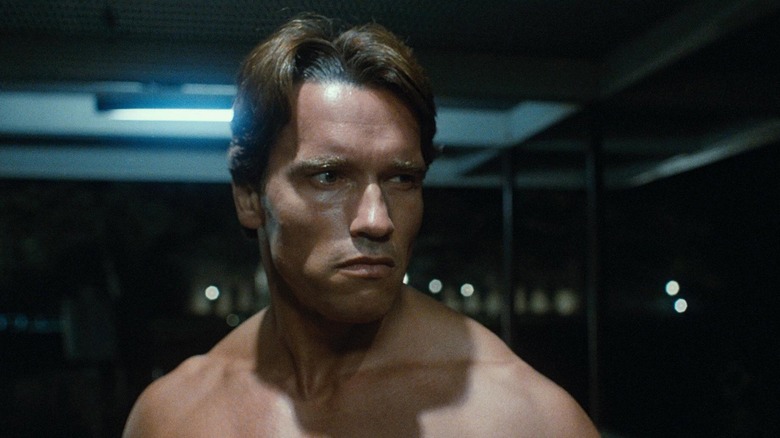
James Cameron's 1984 film "The Terminator" follows a grim timeline for humanity. At some point in the future, humans will unwittingly create a computerized artificial intelligence that will, upon its self-realization, immediately begin a years-long campaign to wipe out humanity. The machines will build a robotic skeleton army of Terminators, and dispatch laser tanks and flying mechanical behemoths to get the job done. Only a few humans will survive, and will gather together into a plucky and effective counter-force against the machine army. The humans are only organized due to the efforts of a man named John Connor, a powerful military commander, and humanity's last hope.
Also in Cameron's vision of things, the machines are losing the war. Although the landscape has become an eternally dark hellscape of human skulls, humans are effectively fighting off their assailants. In a last-ditch effort to wipe out the resistance, the machines -- possessing access to time travel -- elect to send a single Terminator (Arnold Schwarzenegger) back in time to 1984 to wipe out John Connor's mother Sarah (Linda Hamilton) before he was ever born.
The premise, it seems, is very similar to a 1964 episode of "The Outer Limits" called "Soldier" written by Harlan Ellison. Indeed, the similarity was so strong that it led to legal action. Ellison did end up receiving a credit for "The Terminator" while the film took off, making huge amounts of money and spawning a long and increasingly convoluted series of sequels. Cameron, however, only directed the first and second films.
The "Terminator" series is largely about how human reliance on machines has become distressing, and that a machine takeover is, in a very practical sense, nigh. Cameron himself certainly seems to think so.
The Rise Of The Machines
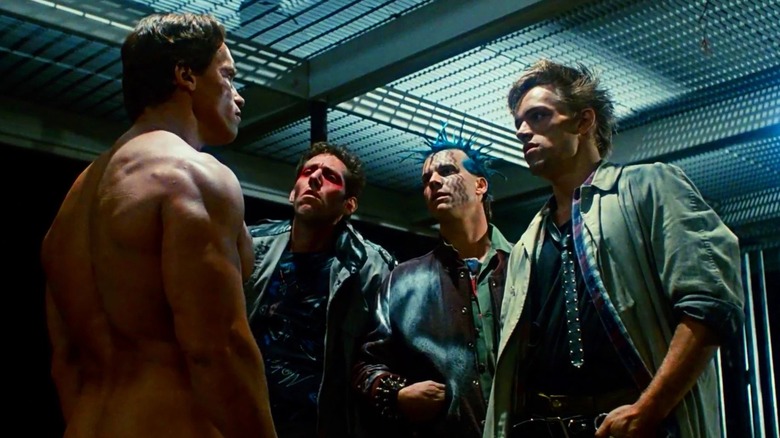
While James Cameron is quite adept at creating and filming exciting machines, guns, and other futuristic technology (as seen in both his "Terminator" films, "Aliens," and his "Avatar" movies), his films tend to be about how the military and machine-wielders are alternately powerless and suspicious. Ironically, one of the most tech-forward filmmakers of his generation tells stories of trusting the natural world over any machines humans may build.
The filmmaker expressed his trepidation about a machine takeover in the December 19, 2022 episode of "Smartless," a podcast hosted by Sean Hayes, Will Arnett, and Jason Bateman. Cameron, as their guest, talked about making his new film "Avatar: The Way of Water" before diverging into his thoughts on a dark machine future:
"Well, I'm not 'afraid' but I'm certainly pretty concerned about the potential for misuse of A.I. I think A.I. can be great, but also it could literally be the end of the world. You talk to all of the A.I. scientists -- and I know a bunch of them -- and every time I put my hand up at their seminars or something, they just start laughing. 'Oh, that's the Skynet Guy, sure, we really want to hear from you.' The point is that no technology has ever not been weaponized. And do we really want to be fighting something smarter than us that isn't us on our own world? I don't think so."
Cameron does have a point: Humanity tends to find either a money-making or a destruction use for many technological advances. Science, in an ideal world, would be used to save us and help us. In practice, well, humans invent atomic bombs.
It Could Already Have Happened

James Cameron also pointed to recent trends in media consumption as potential proof that A.I. has already infiltrated far more deeply into human society than humanity might appreciate. It's already known that social media platforms like Twitter use A.I. to specially curate a user's individual feed. The algorithm, it has been discovered, reacts to outraged replies more often than pleasant ones, leading to an increase in hateful and extreme language on the platform in general. It's all meant to increase engagement, but it's also creating and encouraging dangerous ways of thinking.
These types of stories have Cameron feeling increasingly suspicious of machines. He claimed that A.I. could be deliberately harming us, saying:
"Look, an A.I. could've taken over the world and already be manipulating it, and we just don't know because it would have control over all of the media and everything. And what better explanation for how absurd everything is right now. Because nothing makes a damn bit of sense to me, I don't know about you."
Co-host Will Arnett expanded on Cameron's idea, explaining that A.I., presumably smarter than humans, would be wise enough to erode human minds without letting its own existence be known. It may be a paranoid conspiracy theory, of course, and one that cannot be proven or disproven (un-provability being the primary feature of conspiracy theories), but it's a notion that tracks, knowing its source. Cameron, after all, envisioned a nightmare story about a robot from the future stalking a woman in the present. This seems to be based in real fear nowadays.
Read this next: Sci-Fi Villains That Were More Right Than We Want To Admit
The post Director James Cameron Believes the Events in The Terminator Could Happen in Real Life appeared first on /Film.
Why It Feels So Weird When Star Trek Uses Pop Music
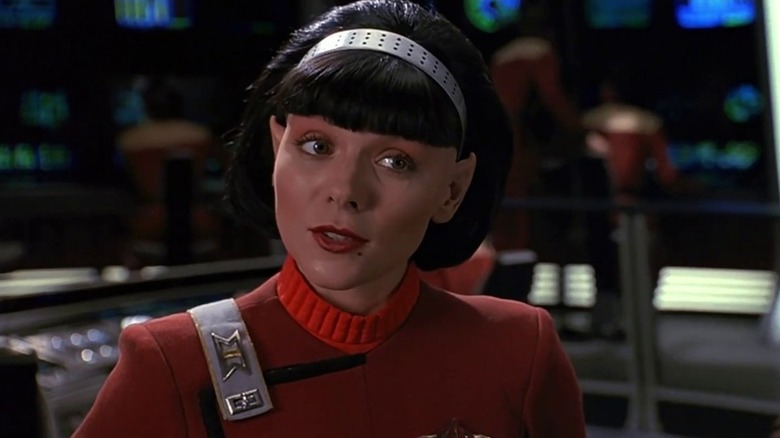
It was weird from the start.
Sometime in 2008, trailers for J.J. Abrams' upcoming film "Star Trek" began to appearing theaters. This new film, the previews announced this quite clearly, was going to be quite different from the "Star Trek" of yore. This was going to be "Star Trek" -- to employ a dated slang term -- on steroids. Audiences witnessed a young blonde kid in a red convertible Chevy Corvette blasting down a country road, a motorcycle cop on his tail. He charges toward a cliff with no sign of stopping. He dives out just before the car barrels into the chasm below. He is covered with dirt and defiance. When the cop asks him his name, he says he's James Tiberius Kirk.
It was weird enough seeing a car in the preview -- vintage Chevys were still plentiful enough to go joyriding in by the 23nd century? -- but it became weirder when, in the actual feature film, that scene was accompanied by the young Kirk (Jimmy Bennett) blasting the Beastie Boys' 1994 hit song "Sabotage" on the radio. "Sabotage" is great and it rocks, and its use provided something loud and rebellious to play while Kirk drives past Iowa farms, passing a hitchhiking pal (also a weird sight in a world with transporters). One might be tempted to assume this was a reference to a notable line of dialogue spoken by the Vulcan officer Valeris (Kim Cattrall) in "Star Trek VI: The Undiscovered Country," but it's far more likely that the filmmakers of the 2009 film merely wanted to include a pop song on the soundtrack.
Of "Star Trek."
A pop song. It's weird.
Let us explore why.
That Which Survives
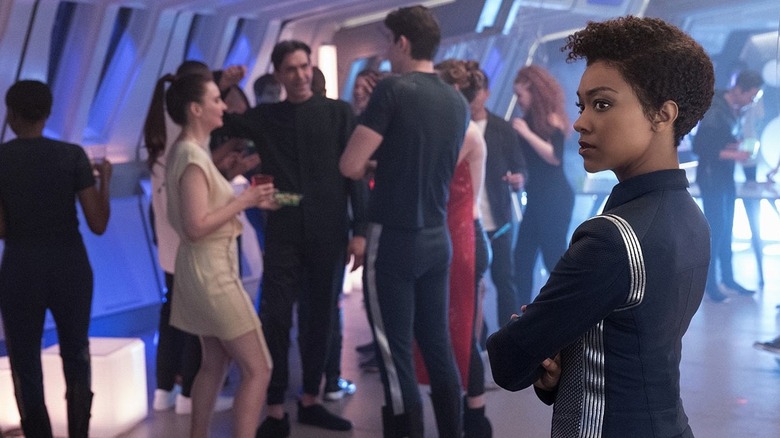
"Star Trek," many might have noticed, has been incredibly ginger with its use of pop culture references. It's very rare that an Enterprise crewmate will make reference to any kind of song lyric or television show from the 20th century. Very occasionally, a visiting dignitary might whistle a few bars from "If I Only Had a Heart" from "The Wizard of Oz," but that's usually about as close to the present as the franchise will get. Even as Trek moves forward, it never alludes to anything that was hip when the original series aired in the late 1960s.
This makes perfect sense from a practical perspective and a hubris perspective. A wise screenwriter would not be so presumptuous as to posit that a contemporary piece of pop art will be important enough to persist into the utopian future of "Star Trek." One can already see memes online about the one time "Star Trek: Discovery" made a reference to the brilliance of Elon Musk. This, in addition to the crew of the U.S.S. Discovery jamming out to Wyclef Jean's "We Are Trying to Stay Alive" from 1997.
Contemporary references are a grand way to assure your screenplay will be quickly dated, so Trek largely eschews them. More commonly, when a "Star Trek" character makes reference to art and culture, it's typically high art from a comfortable distance in the past. Captain Picard (Patrick Stewart) is a big fan of Hector Berlioz and Shakespeare. He might go as modern as "Finnegans Wake," published in 1939. Commander Riker (Jonathan Frakes) prefers jazz, a form that finds its origins in the very late 19th century. No one on the Enterprise, however, listens to Beyoncé, Metallica, or Captain & Tennille.
The Future Is Classy

This use of classical music and literature throughout "Star Trek" not only avoids playing undue credit on contemporary pop culture, but communicates a certain level of artistic sophistication to the world of the future. "Star Trek," show creator Gene Roddenberry seems to say, will be a more cultured place that the present. The idea of ultra-commercialized pop media will be gone in a post-capitalist society, and all that will be left will be more "adult" art.
One can argue, of course, that even ultra-commercialized pop art has its value, and perhaps there still is a Beyhive in the 24th century, but it's certainly something rarely depicted on a Federation starship. Instead, the eschewing of pop music in "Star Trek" goes to a deeper idea within the franchise, and one that reveals an unexpectedly abiding pessimism.
Roddenberry envisioned a bright future for humanity, wherein war would be eschewed, money disposed of, and cooperation paramount. The future of humankind, he argued, was bright. It would be bright because humanity openly rejected conflict, dominance, and greed, accepting diplomacy, education, and exploration in their stead. In order to get to the bright future, however, Roddenberry had to essentially drive humanity to the brink of annihilation. According to "Star Trek" lore, we are due for several devastating wars in our near future. The Eugenics wars will involve specially engineered humans, and World War III will wipe out most of our population.
It will only be after humanity is wiped out -- a species on its knees -- that it will achieve the necessarily cultural clarity to create a utopia.
An Optimistic Future, A Pessimistic Present
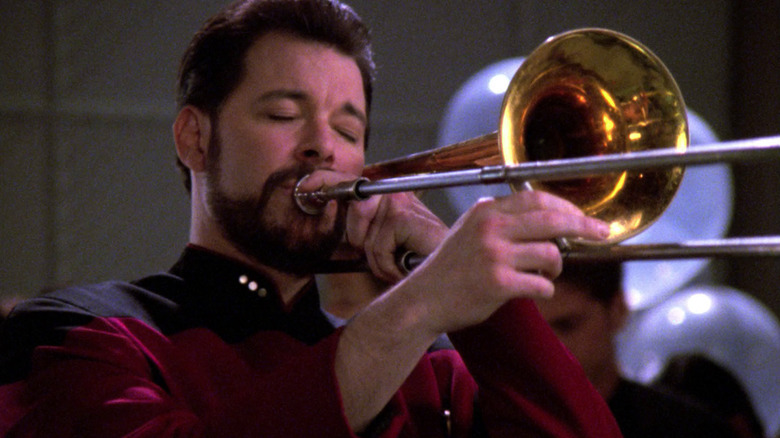
This central conceit of Trek -- that humanity needs to have a good strong Etch-A-Sketch shake before it can draw a new picture -- does serve a basic narrative function, of course. Humans wouldn't have a lot of access to 20th-century pop culture if it has all been wiped out in the wars. But it also reveals that Roddenberry didn't feel too rosy about the world of the 1960s.
Roddenberry's utopia, it seems, was a fantasy born of turbulence. He looked around at the social strife, racism, warmongering, and petty corporate greed, and deigned to imagine a world without any of it. Roddenberry was hopeful about the future, but incredibly cynical about the present. So cynical, in fact, that he fictionally bombed the 20th century into the stone age. Total destruction was, he seemed to feel, a hard lesson we all needed to learn. Humanity would need to become a post-apocalyptic species of kangaroo courts and petty revenge before we could come to appreciate the message of interplanetary community given to us by the Vulcans on First Contact Day.
As such, any vestiges of Roddenberry's present would have to be destroyed along with the aforementioned greed and iniquity. This meant that pop culture would have to go with it. Sorry reruns of "Batman" or "The Monkees," or anything that came after it. You are but a vestigial outcropping of a failed humanity.
So it does sound quite odd when pop songs from the 1990s work their way into "Star Trek" vernacular. The songs are driving and energetic, yes, but every Trekkie seems to inherently sense that those things shouldn't exist.
Read this next: Every Star Trek Show And Movie In Chronological Order
The post Why It Feels So Weird When Star Trek Uses Pop Music appeared first on /Film.
AWS Wins 5-year, $700M+ Contract for Cloud Services To US Navy
Read more of this story at Slashdot.
Lenovo ThinkPad X1 Carbon Gen 11: Release date, price, and everything else
Each year, Lenovo delivers a new iteration of the iconic ThinkPad X1 Carbon laptop, and for 2023, things are no different. The Lenovo ThinkPad X1 Carbon Gen 11 is a fairly modest upgrade from its predecessor, but it does make a few changes that make it that much better of an option. Of course, it has the newest Intel Core processors available, but it also comes with some software improvements for the webcam and an even more sustainable design.
The 15 Best Netflix Original Movies Of 2022, Ranked
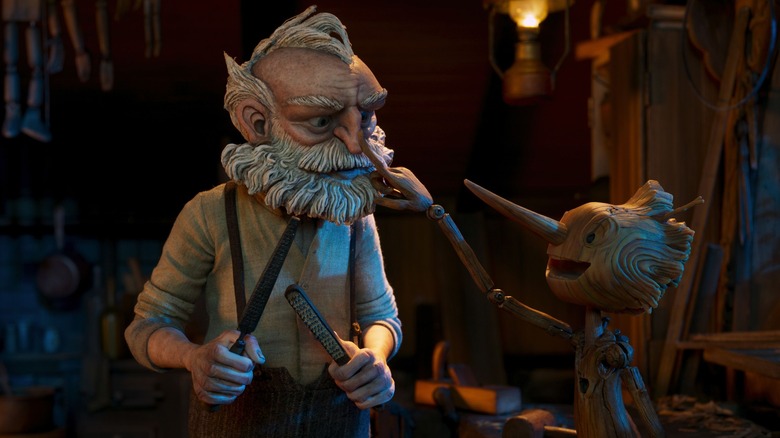
With the pandemic still raging on and many, myself included, still feeling nervous about heading to the theaters, streaming services have been a lifeline for film fans. Netflix still reigns as the victor of the streaming wars and is continuing to establish itself as a certifiable force as a production company. The streamer led the Academy Award nominations last year with "The Power of the Dog," and there's a good chance they'll have plenty to celebrate in the coming weeks regarding this year's slate. 2022 was a time for restructuring and recouping massive losses, but Netflix still managed to put out some undeniably great original narrative features. As we head toward 2023, here are the 15 best original Netflix films of the year, including a few that haven't arrived on the app just yet.
Jackass 4.5

Okay, yeah, I'm kicking off this list by cheating because Netflix didn't make this film, but whatever, it's exclusive to the streamer and I will never lose an opportunity to talk about my favorite dudes. The world is on fire, cut me some slack! As is tradition for the "Jackass" films, "Jackass 4.5" sees Johnny Knoxville, Steve-O, and the rest of the crew return for another round of hilarious stunts and hijinks featuring extra footage and out-takes from "Jackass Forever." Calling this a movie might be unfair, but the bonus material featured in "Jackass 4.5" is more entertaining and action-packed than some of the streamer's most expensive features this year.
The 90-minute collection also features interviews with the cast, explanations of how some of the biggest stunts in the film were pulled off, and provides all of the endearing interactions that elevate the "Jackass" films as more than just juvenile pranks. "Jackass 4.5" is also the best look at the new team — Zach Holmes, Poopies, Eric Manaka, Rachel Wolfson, Jasper Dolphin, and Dark Shark — as well as how they were able to pull off "Jackass Forever" in the midst of COVID-19 lockdowns. Look, life is hard, and sometimes you just want to watch people get kicked by their best friend on a swing set while wearing an inflatable animal costume.
Apollo 10½: A Space Age Childhood
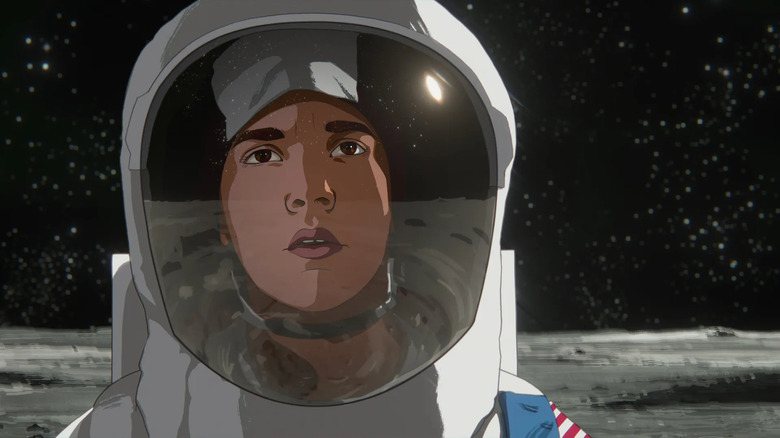
As a former teacher, I would always laugh when my coworkers would lament how many students would say they wanted to be an "influencer" or "Twitch streamer" when they grow up, instead of, say, "an astronaut." The reason is simple — kids today aren't constantly bombarded by the awe-inspiring imagery of astronauts suiting up before missions, and traveling to space is now something a bunch of rich weirdos can do just for the funsies. But for that brief period of time when space adventure was uncharted territory, it allowed a generation to grow up in a web of wonder.
Richard Linklater's latest venture is the rotoscoped animated film for Netflix, "Apollo 10 1/2: A Space Age Childhood," which was described by /Film's Josh Spiegel as "a sweet, friendly, low-key affair that often feels less like a story and more like a home movie Linklater collected to share with his grandkids," in his review. Linklater's film feels like a meticulously curated time capsule of the era, just barely acknowledging the more tumultuous real-life events so as not to cloud the nostalgic lens of the "good ol' days." Linklater is certainly more than capable of crafting a more evocative film, but that was so clearly not the intent with "Apollo 10½: A Space Age Childhood." The intent was to remember a time when science felt like magic, and the horrors of adulthood were still out of reach.
Hustle
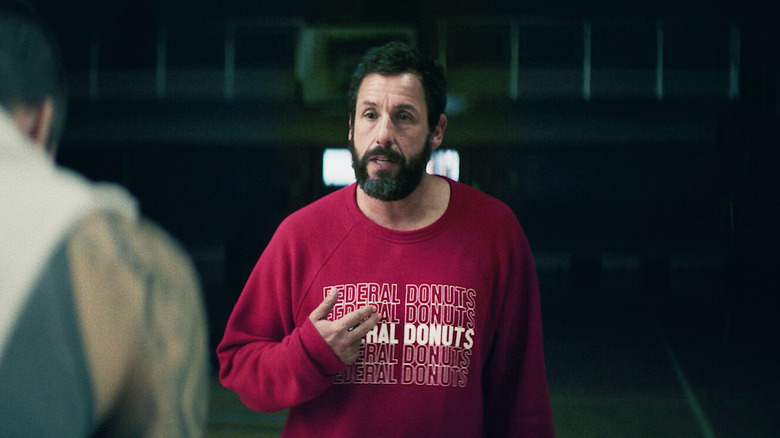
I am a staunch defender of The Sandman, and it's still odd to me that after all this time, people are still shocked when Adam Sandler turns it out in a dramatic performance. After being snubbed by the Oscars for "Uncut Gems" and following it up with the goofball comedy, "Hubie Halloween," Sandler is back in serious mode with the basketball drama, "Hustle." In his review, our own Chris Evangelista called it "a predictable underdog sports story that still manages to charm," which is quite possibly the best way to describe the film. Sandler is a lifelong basketball fan, and his love of the game has been well on display for years. "Hustle" may feel like 100 other underdog sports movies, but at its core, this is a passion project for Sandler and a way to honor the sport he loves so much. The characters of "Hustle" feel archetypal, but that's also part of the film's allure — we can safely predict how things will play out, bringing a great deal of comfort to the viewer.
"Hustle" is also a film that has a deep reverence for basketball in its direction, featuring extended sequences of training montages, live gameplay, and camera work that highlights the athleticism of the players rather than the spectacle of competition. I've never seen a basketball game shot quite like this, and it only adds to the intensity of the story. Okay, sure, there are one too many "LOOK AT THIS CAMEO!" moments for my liking, but "Hustle" is a solid watch with a fantastic performance from Sandler, and will be a great movie to watch with your dad over the holidays.
Metal Lords
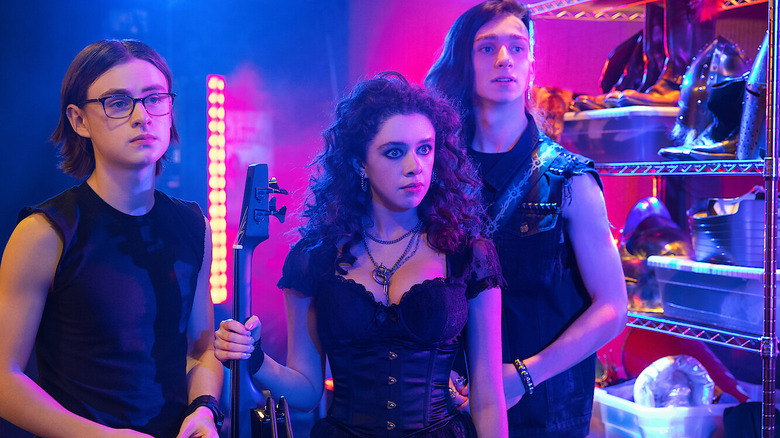
Man, sometimes you just need to sit back, relax, and watch a genuinely fun, good-hearted movie with some swears. The teen comedy "Metal Lords" is an ode to outcasts everywhere, as Hunter (Adrian Greensmith) and Kevin (Jaeden Martell) decide to start a heavy metal band despite being the only two people at their high school who knows anything about metal. Struggling to find a bassist for their new band, the two manage to enlist Emily (Isis Hainsworth), a classically trained cellist, to help them reach their rock dreams. The three-piece metal band has to figure out how to write and play music together and deal with the day-to-day trials and tribulations of being a teenager.
If you enjoyed the film "Deathgasm" but were craving something a little more based in reality, "Metal Lords" is your all-inclusive backstage pass. To be transparent, "Metal Lords" is a bit of a paint-by-numbers approach to a teen movie, which is exceedingly weird considering "Game of Thrones" co-creator D. B. Weiss wrote the script, and director Peter Sollett previously made one of the best teen romance films of the 2010s, "Nick and Norah's Infinite Playlist." Regardless, "Metal Lords" is a tender, funny approach to coming-of-age, backdropped against the power of kickass tunes.
The Wonder

While "Don't Worry Darling" got most of the attention for Florence Pugh this year, her strongest performance came from the Netflix film, "The Wonder." A psychological period drama set in the Irish Midlands in 1862, the film follows an eleven-year-old girl who stops eating but remains somehow stays alive and agile. Pugh plays an English nurse named Lib Wright who comes to the small village to observe the girl, as tourists and pilgrims flock to witness the, you guessed it, wonder.
Admittedly, the premise of "The Wonder" likely would have played out better as a true-to-form horror film. There are plenty of odd decisions made throughout, but as /Film's Chris Evangelista said in his review, "I was still hypnotized by it all; wrapped up in the strangeness mixed with the beautiful-but-lonely countryside. By the time the credits rolled, I was chilled, but puzzled. What does it all mean?" If you're a fan of haunting period pieces in the middle of the European countryside, "The Wonder" will be right up your alley.
White Noise
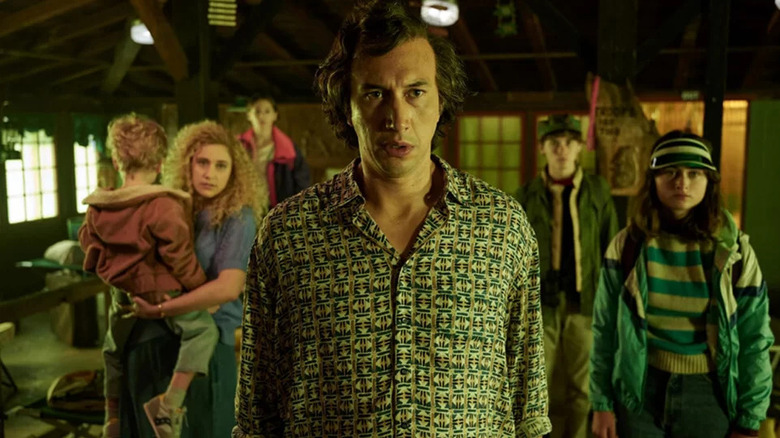
Don DeLillo's 1985 novel "White Noise" is one of the cornerstones of postmodern literature, so Noah Baumbach certainly had his work cut out for him when adapting the material for the screen. Adam Driver and Greta Gerwig star as a suburban couple living in a college town who are forced to evacuate their home after an Airborne Toxic Event. If this sounds like the perfect story after the pandemic irreversibly changed everyone's lives, you're right on target. Rather than focus on the harrowing aftermath of a pandemic, "White Noise" is a commentary on how capitalism has turned crisis into a commercialized commodity.
At the same time, "White Noise" is extremely frank about the harsh realities of existence, pointing out with unflinching (and oftentimes hilariously camp) accuracy that we're all doomed to eventual nothingness, so don't feel bad about enjoying life while you still have it. "White Noise" is also a deeply existential film, meaning each viewer will likely get something entirely different out of it than the person next to them. "White Noise" is a masterclass in examining death, dying, and the drama of life, but filled with plenty of cathartic bursts of humor to keep the psychological damage at a minimum.
"White Noise" arrives on Netflix on December 30, 2022.
The Sea Beast
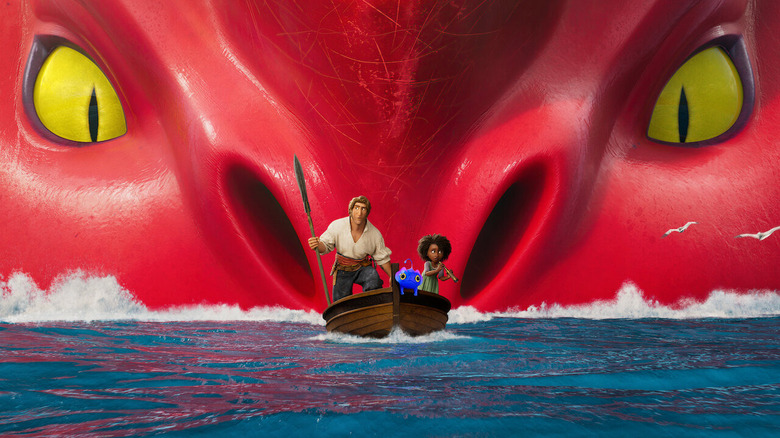
Despite the mass layoffs and cancellations earlier this year, Netflix put out some ridiculously great animated features. One such example is the swashbuckling adventure film by Academy Award-winning director, Chris Williams, "The Sea Beast." The story follows a young girl named Maisie who stows away on the ship of a legendary sea monster hunter, just as he is about to explore uncharted waters and take down a never-before-seen creature. /Film's own Rafael Motamayor called the film "a crowd-pleasing anti-imperialist seafaring adventure," highlighting the exciting battles at sea, the legitimately scary sea monster designs, huge animated thrills, and sweet dynamic between "a hardened monster hunter and an energetic and hopeful kid."
Animation is often unfairly maligned as nothing more than a "kid's genre," when the medium has always existed to tell stories fit for all ages. While "The Sea Beast" does boast a child as one of the leading protagonists, this is the type of all-ages adventure movie that feels at home with the live-action films of Amblin Entertainment. Story aside, "The Sea Beast" is also a gorgeous animated film, which some of the most realistic ships, water, and the greatest monster in animation – ropes. This film didn't get the massive marketing rollout it deserved, which is a shame considering it's easily one of the best-animated features of the year.
Matilda The Musical
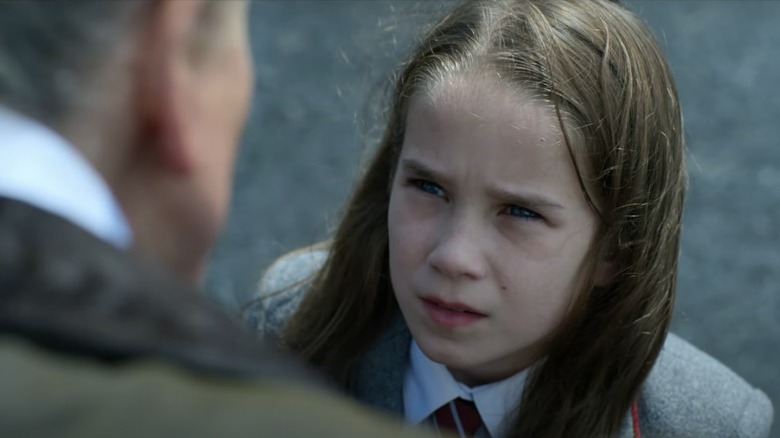
If you're on TikTok, chances are your For You Page has been inundated by people attempting the "Matilda the Musical" choreography for the song "Revolting Children." The film adaptation of the Tony Award-winning musical based on Roald Dahl's beloved children's novel (but with no real relation to the live-action film adaptation from 1996) features music from Tim Minchin, a script by Dennis Kelly, and is directed by Matthew Warchus, who also ran the show on Broadway. As this film isn't yet available on the platform, I won't say much, but know that the musical is just as whimsical, hilarious, and wonderful as the story that inspired it. Alisha Weir is an absolute delight as Matilda Wormwood, and Lashana Lynch's voice as Miss Honey brings the perfect level of sweetness, but alas, despite her talents, Emma Thompson is a bit too buried under prosthetics and padding to allow Miss Trunchbull to be as terrifying as she needs to be. Regardless, "Matilda the Musical" will have you singing your heart out ... and trying that ridiculously good choreography in your kitchen.
"Matilda" will be available on Netflix beginning December 25, 2022.
Wendell & Wild
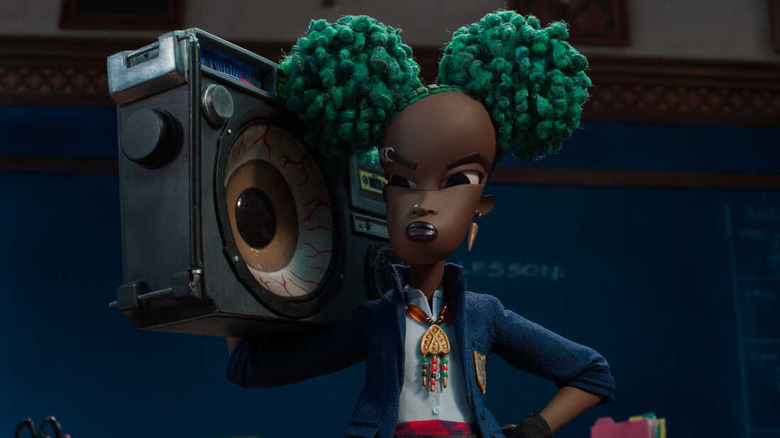
Can we finally cut the crap and officially declare Henry Selick as the king of stop-motion animation? The man responsible for "The Nightmare Before Christmas," "James and the Giant Peach," "Monkeybone," and "Coraline" is back with another instant-favorite. "Wendell & Wild" tells the story of two titular demon brothers (Keegan-Michael Key, Jordan Peele) who convince a rebellious 13-year-old orphan named Kat Elliot to help them into the land of the living. Like many of Selick's films that came before, "Wendell & Wild" is beautiful and macabre but still brings a deeply important message about society — distilled into something young viewers can process. Sure, it's a movie where Hell is a theme park and James Hong is an undead priest, but this is also "Baby's First Prison Reform Movie."
Despite its fantastical elements, "Wendell & Wild" is deeply critical of the systemic failures in America that make the lives of marginalized communities difficult, and also allows Kat, a young Black girl, to showcase justified anger at the circumstances she's been thrown into. This shouldn't be revolutionary in 2022, but it is. Selick has delivered a coming-of-age companion piece to "Coraline" in the best ways possible, and the film boasts arguably the best soundtrack of the year. Fishbone? X-Ray Spex? The Specials?! Yeah, "Wendell & Wild" rules.
Do Revenge

Hollywood has been trying and failing to capture the essence of Gen Z in their teen films for years, but Jennifer Kaytin Robinson's "Do Revenge" did the impossible and absolutely nailed it. Alfred Hitchcock's "Strangers on a Train" by way of the edgy teen films of 1999, "Do Revenge" is about two elite teenagers who join forces to take down their respective tormentors. Of course, this is a teen film, so there's plenty of twisty melodrama along the way, but with "Riverdale" star Camila Mendes and "Stranger Things" fave Maya Hawke in the lead roles, "Do Revenge" brings "Cruel Intentions" levels of next-big-thing-in-Hollywood star power.
"Do Revenge" is a teen movie that simultaneously embraces and subverts the tropes made popular between the era of John Hughes and "Mean Girls," while still feeling like a completely fresh approach to the conflicts of high school living. The characters' problems are treated with legitimacy, but there are plenty of nods to just how ridiculous life can be when you're old enough to have your own freedom but too young to truly be on your own. "Game of Thrones" star Sophie Turner also delivers the best line of 2022 ... you'll know it when you hear it.
Aníkúlápó
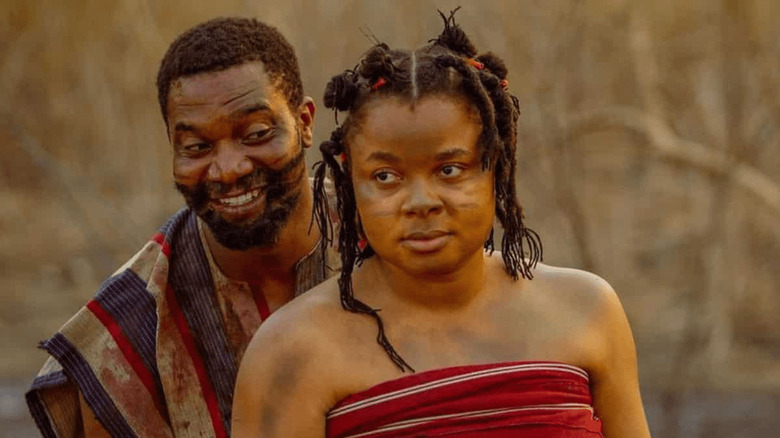
Regardless of your pick for a favorite streamer, it's undeniable that Netflix surpasses all of its competitors with its international collection. One of the best films on the platform this year comes from Nigeria, the Yoruba-language epic, "Aníkúlápó." Director Kunle Afolayan is known for being one of the biggest revolutionaries in Nollywood cinema, helping elevate the medium with larger budgets, shooting on film, pushing for releases in theaters, and telling stories outside of the usual clichés. Set in the 17th-century Oyo empire, "Aníkúlápó" centers on a zealous textile weaver who encounters a mythical bird that offers him one more chance at life, after an illicit affair with the king's wife brings him to death.
"Aníkúlápó" is an epic in every sense of the word, with Afolayan telling The Guardian that he originally conceived the idea as a series like "Game of Thrones," but Netflix requested a film first to gauge the temperature of public interest. The film shattered expectations, becoming the most-watched non-English-language film on Netflix in October. Shockingly, Nigeria didn't enter "Aníkúlápó" for Oscar contention (they didn't submit any eligible films), but if they had, it's likely that the film would have been, at the very least, shortlisted for Best International Feature. It's that good.
All Quiet On The Western Front
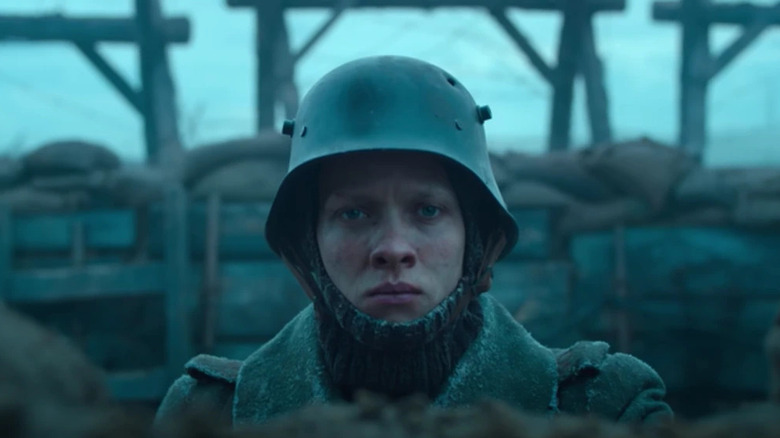
There's a famous line uttered by Hawkeye in "M*A*S*H*" where he says, "War isn't Hell. War is war, and Hell is Hell, and of the two, war is a lot worse." That sentiment is the blood pumping in the veins of "All Quiet on the Western Front," the painfully honest and bleak look at the way war irreparably changes the lives and minds of those thrown into battle. Based on the 1928 German novel of the same name, Edward Berger's epic war drama is not here to glorify fighting for one's country or exist as an instrument of propaganda like ... a majority of the American war films, instead painting a bleak, anti-war portrait with the graphic accuracy that was impossible when Universal first adapted the material in the 1930s.
"All Quiet on the Western Front" is violent and difficult to watch, as it rightfully should be. The scope of how devastating World War I really was is impossible to grasp by most, but Berger's film does a hell of a job trying. He takes the familiar story of an enthusiastic group of German students brainwashed by military propaganda into enlisting only to come face-to-face with the stark realities of war and elevates it into the ultimate cautionary tale and takedown of the start of the military-industrial complex. "All Quiet on the Western Front" is an early front-runner for a Best International Feature nomination at this year's Academy Awards, and it wouldn't be surprising if Netflix took home the statue for this one.
Darlings
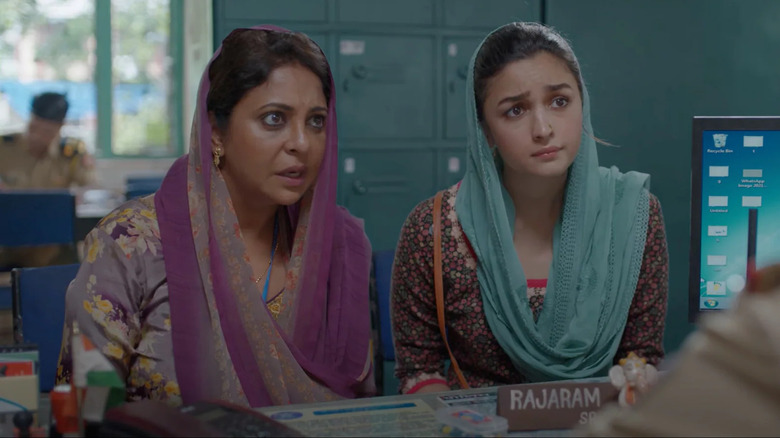
If you liked Alia Bhatt as Sita in "RRR," you're going to absolutely love her in the Hindi-language dark comedy, "Darlings." Co-written and directed by Jasmeet K. Reen in her directorial debut, "Darlings" is a riveting revenge film about a woman (Bhatt) and her mother attempting to take down her abusive, alcoholic husband after his rage takes things a step too far. The film plays out like a comedy of errors, which is a fascinating choice considering the film centers on the very un-funny subject matter of domestic violence. On paper, "Darlings" sounds like something that shouldn't work — but it does to fantastic effect.
"Darlings" often borders on absurdism, but that's part of the charm. This is a film that chooses comedy and humor as the cure for pain and agony, and Bhatt, Vijay Varma, Shefali Shah, and Roshan Mathew more than deliver. There's a perfect balance of satirical farce and the harsh realities of being trapped in a marriage with an abusive partner, even if the film may make some people uncomfortable for simply existing. As someone who can, unfortunately, relate to the story, I found great catharsis in the comedy. It's okay to laugh about the things that cause us pain, in fact, it's a really healthy way to start the recovery process. For all of its wacky humor, "Darlings" is a daring debut from Reen, and a shining example of why Netflix's international catalog is unmatched.
Glass Onion: A Knives Out Mystery

It's another Rian Johnson whodunnit! Netflix paid a pretty penny to become the exclusive home of not just one, but two sequels to the comedic mystery, "Knives Out," and it was worth every penny of the $400 million price tag. "Glass Onion: A Knives Out Mystery" is just as fantastic as its predecessor, with some critics declaring it to be even better. Daniel Craig returns as Benoit Blanc, this time solving a case regarding a tech billionaire and his pals during a private excursion to his Greek island.
"Glass Onion" is a bigger, twistier, and arguably funny adventure for Benoit Blanc, and the new ensemble cast including Edward Norton, Kathryn Hahn, Ethan Hawke, Janelle Monáe, Dave Bautista, Leslie Odom Jr., Madelyn Cline, and a career-best Kate Hudson is just as phenomenal as the group that came before. If you didn't get the opportunity to catch the film during its limited theatrical run in November, make sure to carve out some time this holiday season to catch one of the best films of the year.
"Glass Onion: A Knives Out Mystery" becomes available on Netflix beginning December 23, 2022.
Guillermo Del Toro's Pinocchio
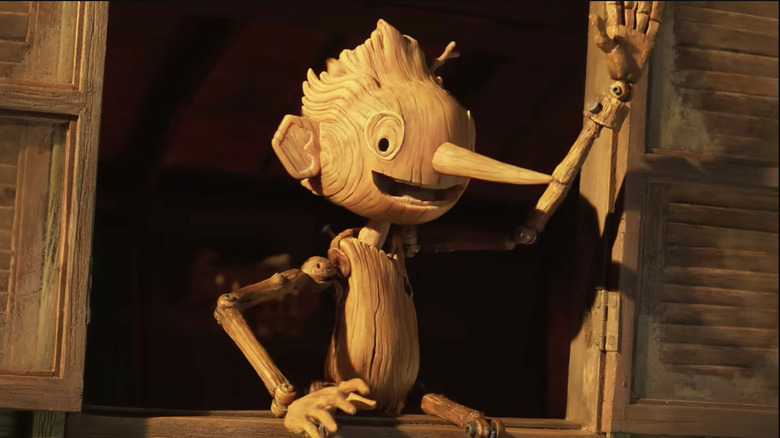
Look, I'm adult enough to admit my weaknesses, which apparently now include a stop-motion talking wooden boy desperately trying to earn the paternal love of a mourning old woodworker. In all honesty, the fact that this blurb isn't just a photo of me crying as I press "start from the beginning" again on my Netflix app is a miracle. Guillermo del Toro has been trying to make his version of "Pinocchio" for well over a decade, saying "No art form has influenced my life and my work more than animation, and no single character in history has had as deep of a personal connection to me as Pinocchio [...] I've wanted to make this movie for as long as I can remember." The result is a moving, devastating retelling of the classic tale, which /Film's Hannah Shaw-Williams called, "an adaptation that refuses to talk down to children or draw a sunny curtain over the terrors of the world."
Guillermo del Toro's "Pinocchio" is an absolute masterpiece and the best adaptation of Carlo Collodi's novel ever put to screen. Plenty may argue that there are other films on this list more deserving of the top spot, but the reason I chose to put "Pinocchio" here is that the film is not just phenomenal but was only possible because of Netflix. "Pinocchio" was in development hell for years, and the streaming giant stepped up to make it happen. The moviemaking landscape is in the middle of an evolution, and "Pinocchio" is proof-positive that these industry changes don't have to be something to fear. The cinematic landscape is better because of films like "Pinocchio" and Netflix deserves credit for making it happen.
Read this next: The Best Movies Of 2022 So Far
The post The 15 Best Netflix Original Movies of 2022, Ranked appeared first on /Film.
Expecting a Tax Refund in 2023? You Should Know About These 10 Tax Changes - CNET
Star Wars Dark Forces lives on again with The Force Engine
Congress Blew Its Last Chance To Curb Big Tech's Power
Read more of this story at Slashdot.
The Best Anime Of 2022, Ranked
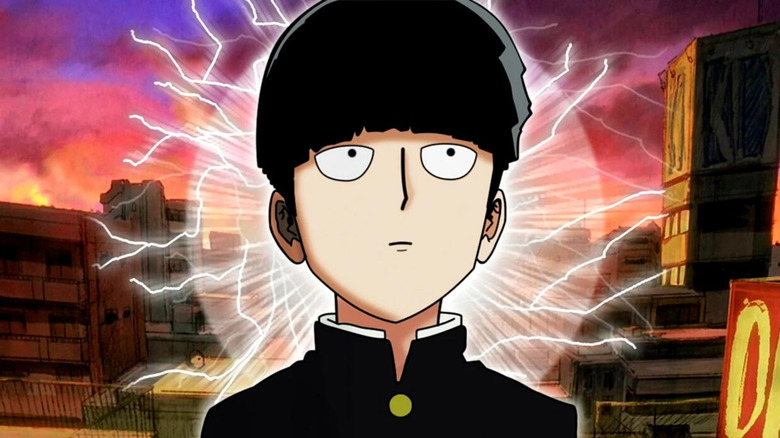
Just when we all thought there was no way to beat the embarrassment of anime riches that was 2021, along comes 2022 to blow every expectation away with so many fantastic shows it was nearly impossible even to begin to try and stay up to day with all of them.
There were giant favorites shocking audiences by returning with their best seasons yet, hugely anticipated sequels delivering tons of thrills, brand new shows succeeding expectations, and even entirely original shows full of surprises. No matter your taste, there truly was something for everyone.
This makes it rather tough to even begin to boil down all the great anime of the year into a best-of list, but that won't stop us from trying. Here is the best anime of the year, ranked.
Made In Abyss: The Golden City Of The Scorching Sun
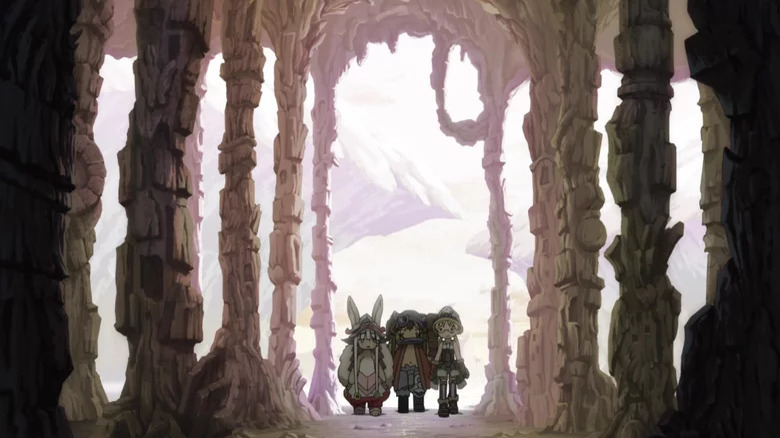
It is very hard to recommend anyone watch "Made in Abyss: The Golden City of the Scorching Sun" because this series contains some of the most brutal imagery in a modern anime. We're talking absolutely gut-punching, heart-wrenching, revolting, heartbreaking moments of pure cruelty and savagery. Not really gory, but gruesome nonetheless, like a creature being skinned alive and torn to pieces.
And yet, the show is simply fun, and most of all, absolutely fascinating in how it puts the audience in the shoes of the characters, forcing them to experience increasingly disturbing things while constantly introducing new parts of a wonderful world you desperately want to explore. A lot of the show, about two kids venturing down a giant chasm in the middle of an island from which there is no return, is about the dangers of the world and the purpose of enduring said danger and pain in order to explore the beauty that is also found in the world. For every moment of terror and pain, there are two moments of pure wonder and awe that make you want to keep going. It is one of the most complex works of storytelling in anime, and it is aided by one of the best anime soundtracks in years, by Kevin Penkin. (Rafael Motamayor)
Lycoris Recoil

"Lycoris Recoil" is the first full anime series ever directed by Shingo Adachi, famous for handling character design and animation direction for "Sword Art Online." You'd expect that the involvement of such a talented artist on a rare original series would necessitate its parent company Aniplex to give it the time and resources it needed to flourish. Instead, "Lycoris Recoil" was a mess right out of the gate, kludged together from disparate parts under pressure. It's a political thriller with no politics and an action series where fighting is subordinate to hanging out with your girlfriend in a cafe. A perfect storm of cliche, cuteness, and sheer bombast. So of course, it's the most successful original anime to release this year and a favorite of video game legend Hideo Kojima. I might be tempted to call it 2022's happiest surprise before the fall season's slate of megahits.
"Lycoris Recoil" uses cliches to set audience expectations and then rewards that audience at every opportunity. The fact that the plot never amounts to much simply gives them even more time with the show's lovable heroines, Chisato and Takina. The series predictably dances around the exact nature of their relationship, but then pulls a fast one and puts two aging gay assassins at the heart of the narrative in the climax. Recent original anime have aimed for the stars only to fall short more often than not. "Lycoris Recoil" aims low, but it hits that mark every single time. (Rafael Motamayor)
The Orbital Children

Mitsuro Iso is one of the greatest animators of all time, responsible for game-changing sequences in films like "Ghost in the Shell" and "End of Evangelion." His 2007 series "Dennou Coil," a near-future tale of death and adolescence that plays like the best season of "Digimon" ever created, proved he was just as capable a director. But "Dennou Coil" bombed commercially. Iso sent the next several years in the wilderness, fighting to create more ambitious, original projects in an industry no longer willing to invest the time and money needed to support them. The efforts of his team finally bore fruit this year in "The Orbital Children," a film duology released this year on Netflix as a miniseries.
The first half of "The Orbital Children" is a delight, introducing the audience to a believably bratty team of kids who must pool all of their strengths together just to stay alive. Intriguing ideas are introduced every few minutes, as the story expands from a simple survival narrative to an ambitious future history of humanity transformed by AI. Once the second half begins, the series sags under its own weight as it struggles to bear what must have been enough plot for two or three times as many episodes. As grateful as I am that "The Orbital Children" was made, it could have been even better with the right editor. But then it wouldn't have been "The Orbital Children," would it? (Adam Wescott)
Ya Boy Kongming!

"Ya Boy Kongming!" has the honor of being the anime show with the single best opening theme song of the year, a song that tells you everything you need to know about the tone of this infectiously entertaining and hilarious anime.
The show follows Zhuge Liang, courtesy name Kongming, one of the most accomplished military strategists of the Three Kingdoms period. After he dies, he gets reincarnated into modern-day Shibuya in Japan. With a head full of ways to crush his enemies to the ground, what does Kongming do? He becomes a manager to an amateur singer and helps her achieve stardom, of course!
"Ya Boy Kongming!" uses its titular strategist's very real military tactics, adapting them for the ruthless combat arena of the music business. This leads to some hilarious scenarios wherein Kongming explains and recounts how he used a certain tactic to annihilate an entire army, and we see them play out on a way smaller scale like humiliating a rival band so they don't steal your audience
The anime is also a great showcase for the power of music to heal people and bring them together. Plus, it is refreshing to see a show about adults living their lives, not dealing with school or growing up. Characters talk about depression, creative burnout, imposter syndrome, and anxiety, and rather than mock them or treat these as simple problems to be solved, they are treated with respect, as problems that don't just go away easily. (Rafael Motamayor)
Cyberpunk: Edgerunners
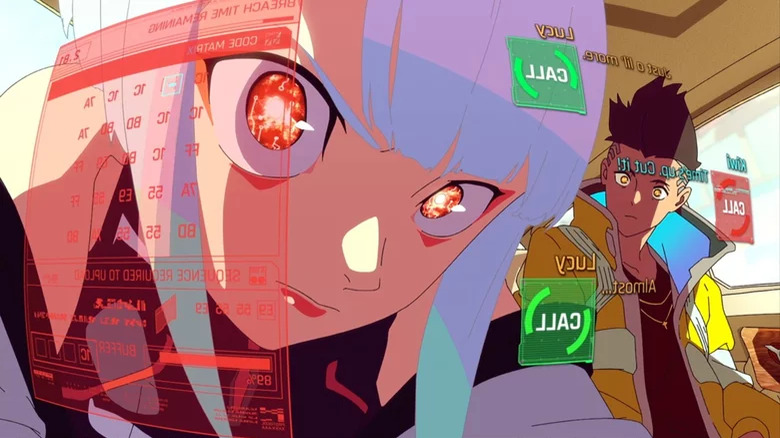
"Cyberpunk 2077" was a disaster at first. Mismanagement, controversy, and a notoriously buggy first release led many to dismiss the game as a disappointment on its release in 2020. CD Projekt Red rallied behind the scenes to fix the game, uploading a series of patches over the next two years. By September 2022, Steam's charts were blowing up with folks returning to "Cyberpunk 2077." But CD Projekt Red had little to do with it. It was "Cyberpunk: Edgerunners," an anime spin-off of the series on Netflix, that transformed "Cyberpunk 2077" from a failure to a late-blooming success. Hiroyuki Imaishi and his friends at Studio Trigger took the gameworld's abrasive pastiche and made everything bigger, badder, and just a bit weirder. "Edgerunners" didn't just convince folks to give the game another shot; it made the whole "Cyberpunk" project better in retrospect.
Studio Trigger is famous for its original projects, but maybe even more effective at hyping up other people's works. Their best works, "SSSS.Gridman" and "SSSS.Dynazenon," are a passionate introduction to "Ultraman" and the greater world of tokusatsu. Similarly, "Edgerunners" drills down to the core of "Cyberpunk 2077" and captures its appeal. The sights and sounds of Night City are replicated faithfully, but this time with a close-knit group of characters you care about despite their simplicity. The action swings from Michael Bay-style bombast to emotional devastation. Not to mention that it's funny, courtesy of characters like the small and rude Rebecca. "Edgerunners" will not change the minds of folks who find Imaishi's shtick exhausting. But its success this year speaks to anime's power, whether used for good or evil. (Adam Wescott)
My Dress-Up Darling

Cosplay, the art of wearing outfits based on your favorite fictional character, is deeply ingrained in the anime fandom, which makes it surprising that there had never been an anime about it — until now. "My Dress-Up Darling" was the, well, darling of the winter season, a rom-com all about uncommon hobbies bringing people together.
The show follows Marin, a popular girl at school who hides a deep passion for cosplaying anime and gaming characters, particularly ones from lewd titles, and Gojo, a shy introvert with a talent and passion for traditional Japanese hina dolls. The two quickly strike up a friendship through cosplay, while an awkward yet adorable romance starts to blossom between them.
As a show about cosplay, "My Dress-Up Darling" does a lot to show why the art form matters, and how intricate it is, explaining in great detail the arduous process of making an outfit from scratch, what you can do on a budget and what all the different elements are and what they are for. Likewise, this is an anime that is all about how validating it is to share your hobbies, and how gratifying it is to embrace your passions and encourage others to embrace theirs. There is no shaming in the show whatsoever, and it is quite refreshing to see an anime so openly validate a female character's love of eroge (erotic games).
Gojo and Marin's romance starts out from a place of mutual respect for each other's passions, and it is a delight to see them support one another and learn to be more open to other ideas. Granted, this is still a romance anime, and it is a steamy hot one. (Rafael Motamayor)
Mobile Suit Gundam: The Witch From Mercury

"Mobile Suit Gundam: The Witch From Mercury" is a bold new vision for "Gundam." The first new franchise title in seven years, it ditches the fan-favorite Universal Century timeline in favor of a high school run by powerful arms manufacturers. Scriptwriter Ichiro Okouchi delivers the big crowd-pleasing swings he's famous for while leaving just enough unsaid for fans who enjoy speculation to tie themselves into knots. Director Hiroshi Kobayashi has had a tougher time keeping the show's animation to the standard of his earlier projects, but the giant robot fights have remained entertaining throughout. Of course, knowing Okouchi's past history and the show's rough schedule, "The Witch From Mercury" could collapse at any time. But it's earned a devoted following among both young and old fans, just as producer Takuya Okamoto hoped.
The heroines of "Witch From Mercury," Suletta and Miorine, begin the series knowing nothing about the term "Gundam" and what it signifies. Just like the audience, they must decide what "Gundam" means to them, and whether the path they walk to adulthood ought to be lined by flowers or fires. As much as the series diverges from the past at first glance, its heart burns with the anger of "Gundam" proper. It's inspired a number of folks I know to seek out earlier seasons of the franchise to see what all the fuss is about. Whether or not "Witch From Mercury" sticks the landing, I applaud it for bottling the appeal of "Gundam" in an accessible package without compromising its sheer weirdness. (Adam Wescott)
Inu-Oh
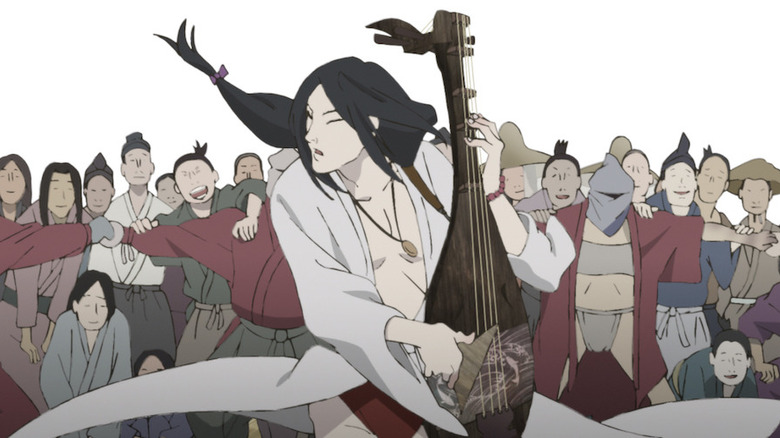
Yes, this is a movie, but it is worth making an exception for "Inu-Oh" because it is one of the best movies of the year, regardless of medium. This may also be the last time we see a project helmed by Masaaki Yuasa, and that's worth homaging.
If you saw "Elvis" and thought that movie was too tame and grounded, but also had rather little to say about the nature of art and the politicization of it, then you need to give "Inu-Oh" a chance. This is a movie that asks, what if Beatlemania happened in 14th-century Japan? The answer is one of the most energetic and electrifying movie musicals ever made. Packing a lot of story into a compact run time, "Inu-Oh" centers on the friendship between the titular Inu-Oh, a dancer cursed with a unique physiology, and a blind musician named Tomona, and how they launch themselves into stardom by revolutionizing musical performance.
And it is the musical performances that make the film. The songs are catchy as hell, with Avu-chan's vocals blowing any actor-turned-singer out of the water, and melodies that reference everyone from Prince to Freddie Mercury — there's a "We Will Rock You" homage, and a song with the operatic vibes of "Bohemian Rhapsody." But the visuals sell the songs, with Yuasa and his team delivering bombastic and psychedelic musical numbers that are as electrifying to the audience as it seems to be to the characters in the film. If you thought Baz Luhrmann didn't include enough shots of Elvis' gyrating crotch or enough anachronistic moments, wait until you see a 14th-century month dress like Elvis, and play guitar like Jimi Hendrix, all before inventing breakdancing. (Rafael Motamayor)
Kaguya-Sama: Love Is War –Ultra Romantic–

"Kaguya-sama: Love is War -Ultra Romantic-" didn't have to go so hard. This is the third season of an already popular high school comedy built on a reliable comedic engine. It could coast on the back of its enjoyable characters and call it a day. But that wouldn't do for "Kaguya-sama," a series that operates by taking an already-absurd idea and blowing it up to such ridiculous extremes that the viewer can't help but laugh. So yes, when it came time for the third season's "rap episode," it wasn't just enough that the voice actors put everything they have into rapping. The staff had to lay out the sequence as an absurd riff on music videos complete with a fish-eye lens, film grain, and elaborate choreography. Then the ending credits blow the roof off with a fantastic animated concert performance featuring redesigned versions of the entire cast. There's even breakdancing.
Director Mamoru Hatakeyama earned critical acclaim for his anime drama "Showa Genroku Rakugo Shinjuu." After three successful seasons of "Kaguya-sama," he's likely better known as a master of comedy at this point rather than tragedy. But perhaps that's not such a bad thing. Few other recent anime have accomplished so much with so little as "Kaguya-sama," which spins its simple formula into a non-stop barrage of creative visual gags. Yet few other comedy anime are as affecting, investing the audience in the cast and their relationships through careful direction and specificity. (Adam Wescott)
Ranking Of Kings
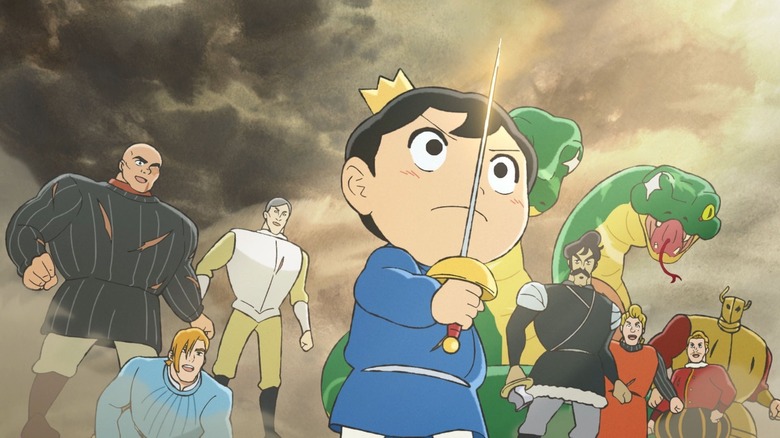
While this show technically premiered in 2021, half of the season aired in 2022, so we're counting it, as it is truly one of the best shows of the year. "Ranking of Kings" is all about not judging a book by its cover, and Wit Studio even uses the very medium of animation to illustrate the point, with a colorful, childlike, fairy-tale-book-like art style that hides an emotionally complex story full of dark twists and turns.
"Ranking of Kings" follows Bojji, a young prince everyone looks down upon because of his lack of hearing and physical strength — especially compared to his literal giant of a father — and his adventures trying to become a worthy king. The show thrives in engaging with expectations set by centuries' worth of archetypical stock characters from classic fairy tales, before flipping the script and revealing the characters' deeper motivations and personalities. An evil stepmother becomes one of the most well-rounded people on the show, a valiant knight can hide a darker purpose, or a scary monster turns out to be a great ally.
Then there are the visuals. "Ranking of Kings" may not appear to be an action-packed show like "Chainsaw Man" or "Attack on Titan," but it hides some of the best action choreography of a show this year. This is particularly thanks to storyboarders and directors like Gosso, who find inventive angles and camera movements that make even the smallest fight feel grandiose. (Rafael Motamayor)
Bocchi The Rock

In a season full of big-name sequels and adaptations of massively popular manga, along comes "Bocchi the Rock" and carves a place as one of the best shows of the year. At first glance, there's nothing novel or mind-blowing about this anime, which appears like just another cute-girls-become-friends-and-play-music like "K-On!" but quickly evolves into a phenomenal, memorable, stunningly animated show — one unlike any other show this year.
"Bocchi the Rock" Hitori "Bocchi" Gotoh, a high-schooler with crippling social anxiety who taught herself to play the guitar to make a band and gain friends. When she is asked by a student from another school to join her band, she has to face her biggest fears and anxieties — being anywhere in public, and dealing with other people.
What makes this anime so unique and special is how deeply sympathetic the story is towards social anxiety and Bocchi's journey to overcome it, and how outright hilarious and visually inventive it is. Studio CloverWorks gets us inside Bocchi's state of mind through different art styles and even mediums, using everything from claymation, zoetrope, and even live-action footage, referencing all kinds of anime from "Neon Genesis Evangelion," to "Ashita no Joe," "Dragon Ball Z," and even "Fist of the North Star." Week by week, "Bocchi the Rock" gave us some of the most memorable moments in anime this year. (Rafael Motamayor)
Chainsaw Man
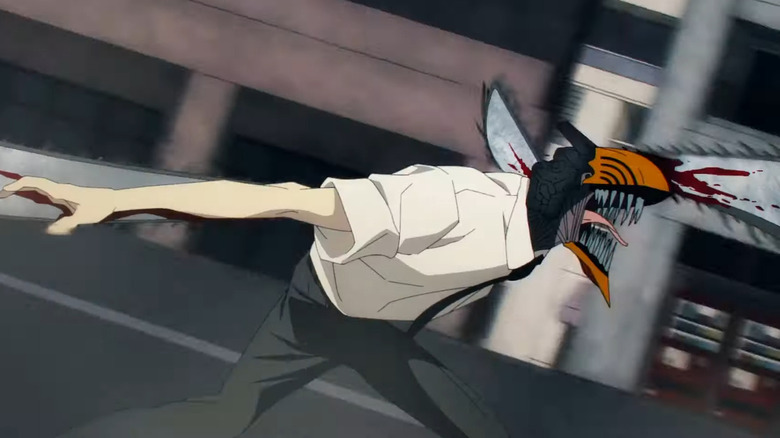
"Chainsaw Man" is one of the most exciting comics running in Shonen Jump right now, and its anime adaptation is one of the best shows to air this year. It's packed with memorable characters, like disaster protagonist Denji, the megalomaniacal Power and Makima, the world's most dangerous girlboss. The staff list is packed with luminaries including action director Tatsuya Yoshihara, composer kensuke ushio and demon designer Kiyotaka Oshiyama. Force of nature Shota Goshozono comes on board to direct episode 8, one of the single meanest episodes of anime produced this year. Not to mention the opening sequence, which is perfect, and the many ending sequences, which spin the nonstop energy of "Chainsaw Man" into weird and wonderful directions.
That said, two things hold "Chainsaw Man" back from greatness. First, the comic doesn't start really cooking for me until the Bomb Devil arc, which the anime likely will not reach until next season. There's plenty of good material in this first bit, but many of the comic's best moments lie far in the future. Second, the adaptation plays things just a little too safe for my liking. It's technically proficient, but director Ryu Nakayama's cinematic approach flattens the go-for-broke energy that made the original comic a hit. They could have made "Chainsaw Man" look like anything, so why did Studio MAPPA make it look like a slightly more polished "Jujutsu Kaisen?" Nakayama and his crew clearly understand and respect the heart of the source comic; I just hope future seasons of the show do justice to its freakier aspects, too. (Adam Wescott)
Spy X Family

It used to be said that "Cowboy Bebop" was the perfect gateway anime because of its mix of standalone episodes with serialized stories, so it's not too alienating for audiences familiar with American cartoons. That should change this year, as a new anime premiered that presents the best of what the anime medium can do, in a package that can be universally understood and appreciated no matter your familiarity with anime.
That show is "Spy x Family," essentially a comedic, sci-fi version of "The Americans," about a super spy needing to create a fake family in order to get close to a target. What he doesn't know is that his new fake daughter is an esper who can read minds, his wife is an expert assassin, and his dog can predict the future. A co-production of WIT Studio ("Attack on Titan") and CloverWorks ("Promised Neverland"), this show is a visual marvel, with some of the best action scenes you can get even if that is not the focus of the show. As a show about a family, the Forgers are some of the most likable characters you can find, and as a comedy, the show is utterly hilarious, mostly thanks to Anya Forger. The highlight of the show, the standout character of 2022, and the lady of memes, Anya is an absolute delight, and reason enough to watch one of the best shows of the year. (Rafael Motamayor)
Attack On Titan The Final Season - Part 2
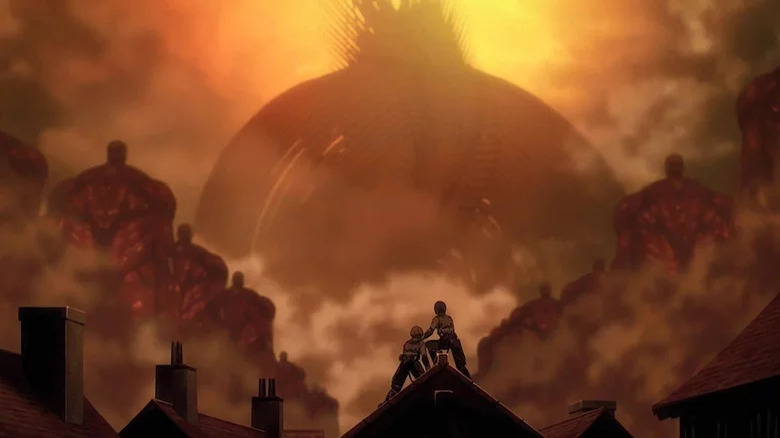
In a year as stacked as this, it can be hard to remember that "Attack on Titan The Final Season Part 2" made huge waves earlier in the year with a true TV event that had everyone glued to their screens on Sundays, while every single episode trended on social media.
And it's easy to see why. Directors Jun Shishido and Yuichiro Hayashi and studio MAPPA took Hajime Isayama's source material and blew every single aspect of it to new heights. The music, the editing, the writing, the character animation, and, of course, the action were firing on all cylinders, delivering anime's answer to appointment TV with episode after episode delivering some poignant observation, some character development, some deeper themes, or some of the most shocking revelations of any anime in recent memory.
Indeed, it will be hard to forget the one-two punch of the mind-melting "Memories of the Future," and the cuckoo bananas, emotionally devastating "From You, 2000 Years Ago." The show has had some terrific villains over the years, starting with the Titans themselves, but nothing could have prepared audiences for Eren's turn from traumatized little psychopath to full-blown genocidal devil. Most importantly, it never feels like a jump in logic, but as the natural progression of his character. By the time the season ends and one of the main insert songs from the first season plays over a truly apocalyptic sight, "Attack on Titan" reaffirms itself as one of the boldest shows of the modern era. (Rafael Motamayor)
Mob Psycho 100 III
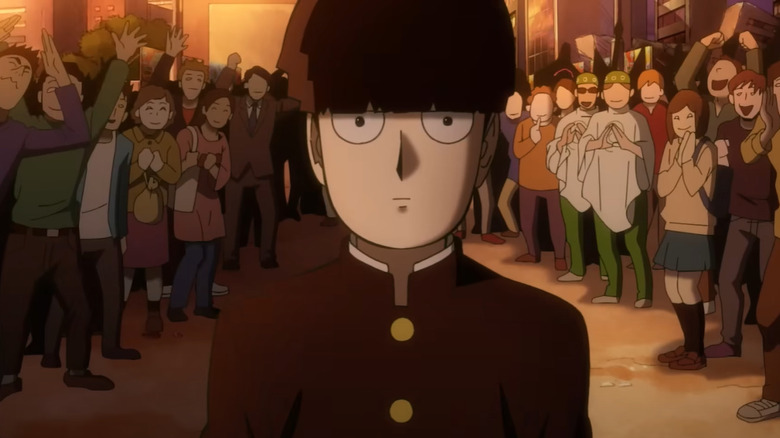
The third season of "Mob Psycho 100" has all the ingredients of a great adaptation. It captures the essence of its source material, translating both the tongue-in-cheek and the emotionally raw and heartfelt tone of the manga to the screen. Then, it uses that essence, and what is already a great story to showcase some of the most dazzling cartoon visuals in an anime in years.
We're not talking about intricate camera movements or fluid action, or realistic character animation, but pure "Looney Tunes" madness that sells the endless possibilities of the animation medium. Studio Bones filters the show through a technicolor lens that gives even the slickest and tensest of fight scenes with goofy physics and colorful visuals to remind you that, yes, this is a cartoon, and yes, it can be pretty ridiculous — and that rules. "Mob Psycho 100 III" can move from thrilling to silly, to horrifying and heartfelt in the span of a single episode, sometimes all of those in the same scene.
At the center of it all, is Mob. It's a bit of a cliché to say that the characters are what sells a story, but here it is absolutely true. What makes this show different from ONE's other major work, "One Punch Man," is seeing how far the titular Mob has come in his emotional development. He's made friends and connections, and he has people that care about him, and when those are threatened — or they give him terrible fashion advice — it can be heartbreaking and have apocalyptical consequences. In three seasons, "Mob Psycho" has given us not only the second-place contestant in the Tumblr Sexyman competition, but one of the most compelling, endearing anime characters ever. (Rafael Motamayor)
Read this next: 18 Underrated Anime Movies You Really Need To See
The post The Best Anime of 2022, Ranked appeared first on /Film.
Alpha Protocol - Retrospective Review
Microsoft Intune: 5 endpoint management predictions for 2023
Are you wondering what initiatives to prioritize in the new year? This blog distills some of the major forecasts for 2023, from technology to new worker behavior. We then help to translate the implications for those trends for those in charge of endpoint management strategies.
The post Microsoft Intune: 5 endpoint management predictions for 2023 appeared first on Microsoft Security Blog.
Distribution Release: Tails 5.8
First Look at 'Loki' Season 2 Appears in Disney Plus Trailer - CNET
Charlie Cox Has The Perfect Response To She-Hulk's Critics, Defends His 'Walk Of Shame' Scene
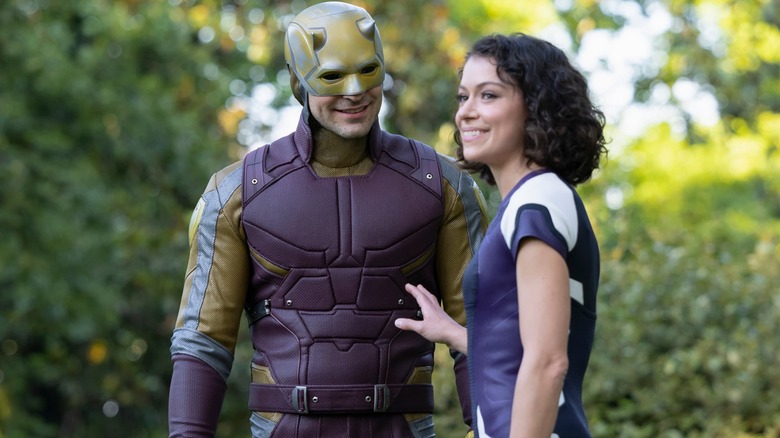
As much as people love to complain about the formulaic nature of the Marvel Cinematic Universe, the truth is, you'd be hard-pressed to find two superhero TV shows more distinct in tone than "Daredevil" and "She-Hulk." Easily one of the best of Marvel's Netflix series, "Daredevil" aired for three seasons beginning in 2015, before being canceled with the rest of his fellow superheroes. Season 3 was fantastic and this writer was personally heartbroken when the show got axed, leaving all those loose plot threads dangling. Daredevil has long been one of my favorite heroes and I loved Charlie Cox for the role, so I was overjoyed when he reprised the role on "She-Hulk" earlier this year.
I have to admit, I did wonder how it would work tonally, since the two series are so drastically different. While the Netflix shows were intended to be a part of the MCU, they were never really integrated into this universe, and remain quite dissimilar from much of Marvel's other output. However, my doubts were put to rest when I saw just how well Matt Murdock fit into the "She-Hulk" narrative.
The Netflix series were probably the last time the MCU was ever actually sexy — the less we discuss the sex scene in "Eternals" the better — so the fact that Jen has an active sex life was both exciting and kind of surprising. In the context of this show, having Matt and Jen hook up after all that flirting and fighting makes total sense. Why on Earth would they not? That delightful scene was followed by another: Daredevil's "walk of shame" the next morning. Sadly, some fans hate fun and the plot point proved a bit divisive. But Cox had the perfect response.
Embracing A Lighter Tone
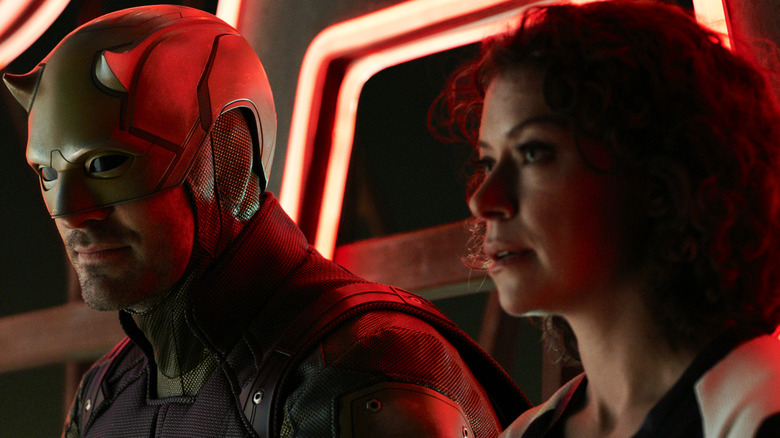
When speaking to Digital Spy, Charlie Cox delved into how he felt about the way some fans reacted to Matt's romance with Jen. He said:
"There are things that you do when you're playing a superhero. There are scenes that you read, and you go, 'The fans are going to love this. This is knock-out'. And then there's stuff like the walk of shame, where you're like, 'I don't know. This could go two ways. This could be something that the fans really enjoy, and it could be something that feels like it goes against the nature of what they love about the character and the tone of the piece'.
"The good thing about doing it on something like 'She-Hulk' is, it's not Daredevil's show. It was my job as the actor to come onto another person's show and embrace the tone, whilst staying as true to the character as I possibly could. In this world, Matt's in LA, and he lets his hair down a little bit. He's just having fun. He's killing it in the courtroom. You know, he has a fling with a really beautiful and charismatic lawyer. And then they get to do some superhero stuff.
"It tonally felt very different from everything I've done as that character, but that was also really exciting and new and different and in keeping with the character. If you read the comics, there are a series of Daredevil comics where the tone is much lighter, and he is much more kind of silly and goofy than perhaps we've done much of previously with this character. You can't please all the people all the time. If 'She-Hulk's' not your thing, then don't watch it. Watch something else."
Superheroes Smash

Part of the fun of reading superhero comics is seeing one character cameo in another's book. Sometimes the MCU gets so concerned with the bigger picture that it doesn't pay enough attention to the project you're actually watching, but this didn't feel like that. In fact, none of "She-Hulk" did. That's part of what made it so refreshing. Besides, what's more relatable than Jen's dating struggles? These are two very attractive, single people with quite a lot in common, and we know Jen hasn't had the best of luck in this department lately. The MCU requires quite a suspension of disbelief, but one of the most difficult aspects to grasp might just be the fact that no one seems to be having sex in this universe populated by gorgeous super-powered people in skintight spandex! The MCU needs more of this.
As for the way Matt Murdock is written in the show, Charlie Cox is absolutely correct about the Daredevil comics. Sure, my favorite runs from Frank Miller or Brian Bendis and Alex Maleev might not see DD having a ton of fun, but Mark Waid's take on the character's lighter side — probably what Cox was referring to — is also great. I tend to follow writers and artists more than characters, because a good creative team can make me love any hero or villain. Perhaps that's why it's so easy for me to embrace this. It's like Daredevil showed up in She-Hulk's book.
We don't yet know what sort of tone Marvel will go with for the upcoming "Daredevil: Born Again," but I would imagine the studio knows what fans are hoping for. I'm sure Daredevil will be treated differently back in his own comic. Plus, Cox is right about something else: if you don't like it, don't watch it.
Read this next: MCU Jokes That Didn't Age Well
The post Charlie Cox Has the Perfect Response to She-Hulk's Critics, Defends His 'Walk of Shame' Scene appeared first on /Film.
UK Govt: Netflix Password Sharing Is Illegal and Potentially Criminal Fraud
Read more of this story at Slashdot.
The Daily Stream: These Amicus Anthologies Are A Must-Watch Marathon For Film Buffs
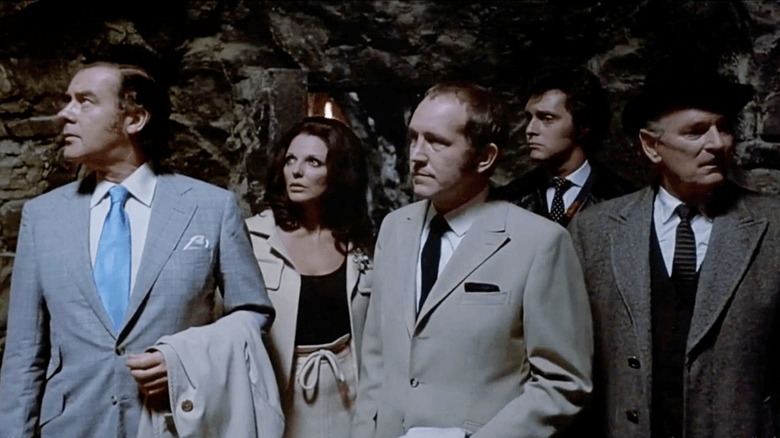
(Welcome to The Daily Stream, an ongoing series in which the /Film team shares what they've been watching, why it's worth checking out, and where you can stream it.)
The Movies: "The House That Dripped Blood," "Tales from the Crypt," "Asylum," and "The Vault of Horror"
Where you can stream them: Tubi
The Pitch: Every October, as streaming services fire up their spookiest programming, a thirst arises for digestible, fun horror anthologies. The most-cited gold standards for these collections are George A. Romero's 1982 classic "Creepshow" and the '90s-dominant HBO series "Tales from the Crypt," among others. What has gone long-unacknowledged is a series of horror anthology films arriving partway between those genre classics and the comic books that directly inspired them, courtesy of the England-based Amicus Productions.
This writer has dedicated some praise to "Asylum," Roy Ward Baker's 1972 anthology featuring a mechanized blade-wielding mini-Herbert Lom. But after discovering that the following films are all accessible on Tubi's streaming app, it's time to blow the Amicus conch shell and welcome film enthusiasts to broaden their cinematic horizons with the predecessors to their scary anthology faves.
One could say that the Amicus movies were the gradual product of World War II. Coming into the 1950s, Americans would confront themes of mass annihilation and enemy infiltration through fringe extremes like UFO mania and McCarthyism-borne distrust (which would distill itself into cynical showcases like "The Monsters Are Due on Maple Street" episode of Rod Serling's original series "The Twilight Zone"). According to scholar David J. Skal in his horror genre chronicle "The Monster Show," by 1953, "more Americans were reading horror comics than were reading 'Reader's Digest' or 'The Saturday Evening Post,'" and from then, the Entertaining Comics (E.C.) Group launched the biggest wave of imitators in the Atomic Age. Their most retold works include "Tales from the Crypt," "The Vault of Horror," and "The Haunt of Fear," with tried-and-true personal vengeance tales and Monkey's Paw variations. In the following movies, Death is the great equalizer — the only way to deliver true justice to wrongdoers.
The House That Dripped Blood (1971)
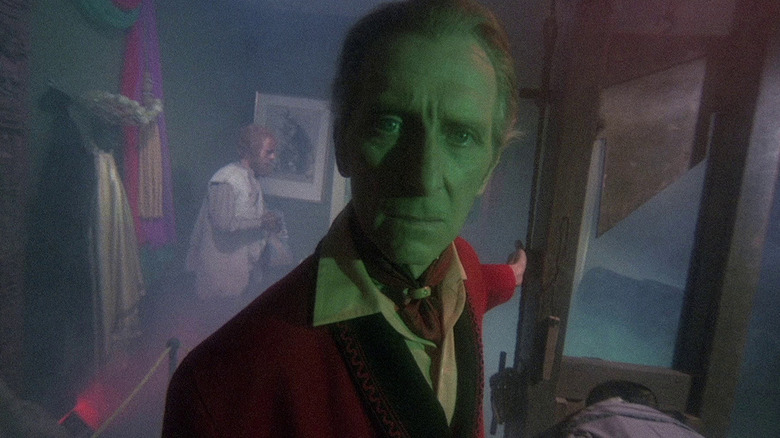
The wraparound: Detective Inspector Holloway (John Bennett) arrives from Scotland Yard to investigate the disappearance of film star Paul Henderson ("Doctor Who" star Jon Pertwee) from his isolated country house. Holloway learns of the home's strange history, occupant by doomed occupant.
Why it's essential viewing: First up is "The House That Dripped Blood," directed by Peter Duffel in his only Amicus production. Released in 1971, it's one of the Amicus crop's tamest anthologies, with plenty of star power (Peter Cushing! Ingrid Pitt! Christopher Lee!) filmed in crisp Eastman Color to keep things interesting. Each house occupant's story is crafted by Robert Bloch, known for writing the novel that would inspire Alfred Hitchcock's "Psycho." In his reflective book on horror, "Danse Macabre," author Stephen King regards the legacy of weird fiction publisher Arkham House, also known as the unit that first published H.P. Lovecraft's works in hardcover. Arkham's "most important works," King claims, arrived "in the period 1939-1960 — works including 'The Opener of the Way' and 'Pleasant Dreams' by Robert Bloch."
Some of Bloch's stories find their way into the blood-dripped house, the most entertaining being "Sweets to the Sweet," originally published in the March 1947 volume of post-war pulp mag "Weird Tales." Therein, moody widower John Reid (Christopher Lee) moves into the house of the title, along with his cherubic but pyrophobic daughter Jane (Chloe Franks). Hired tutor Ann Norton (Nyree Dawn Porter) suspects an abusive relationship between the two. She helps the girl overcome her fear of fire and teaches her to read, both of which catalyze Jane's emancipation -- with disastrous results to be filed under "good for her."
Tales From The Crypt (1972)
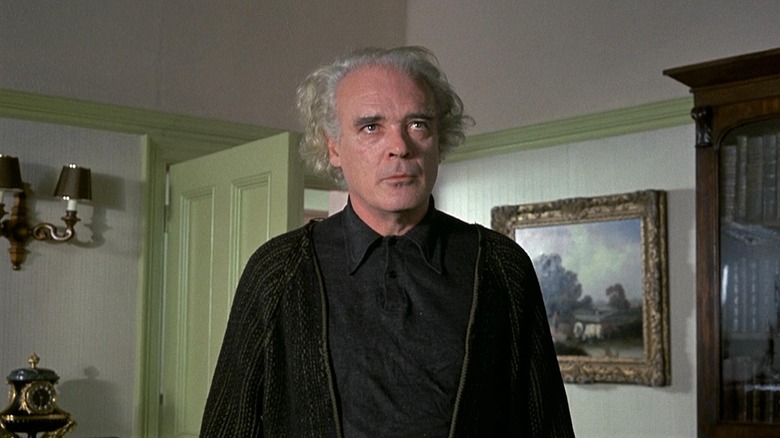
The wraparound: Five strangers (Joan Collins, Ian Hendry, Robin Phillips, Richard Greene, and Nigel Patrick) touring a crypt cross paths with the Crypt Keeper (Ralph Richardson), who warns of each person's respective gruesome death.
Why it's essential viewing: Directed by seasoned Hammer horror director Freddie Francis, "Tales" is the highest-regarded Amicus collection and a bridge between the EC Comics heydey and its great echo in the era of "Tales from the Crypt" and Romero's "Creepshow." It kicks in the door with the sacrilegious holiday delight "...And All Through the House," which disrespects Christmas with a naughty Joan Collins ("Goonies" mom Mary Ellen Trainor would assume the role in the HBO series' episode of the same title), who finds herself at the mercy of a filthy escaped maniac dressed as Saint Nick. There's something subversive in watching Collins, with a full roller set teased to the moon and jewelry clanking like sleigh bells, scooping up blood with a silver cake server and pouring it into a champagne glass.
"Poetic Justice" features one of the most mean-spirited characters among the films listed: a rich snot (Robin Phillips) who conjures up a smear campaign against the sweetest character Peter Cushing has ever played. That's when the segment's title activates, in a bloody moment that predates a similar death in "My Bloody Valentine" by nearly a decade.
The collection's peak is in its final segment, "Blind Alleys" -- an old-fashioned tale of secular street justice, no occult shenanigans needed. Major William Rogers (Nigel Patrick) is the tyrannical new director of a men's home for the blind. When his penny-pinching callousness results in the death of one of the men, the others enact swift and sweet punishment led by Patrick Magee, tapping into a sliver of the fury he'd channeled in "A Clockwork Orange" the year prior.
Asylum (1972)
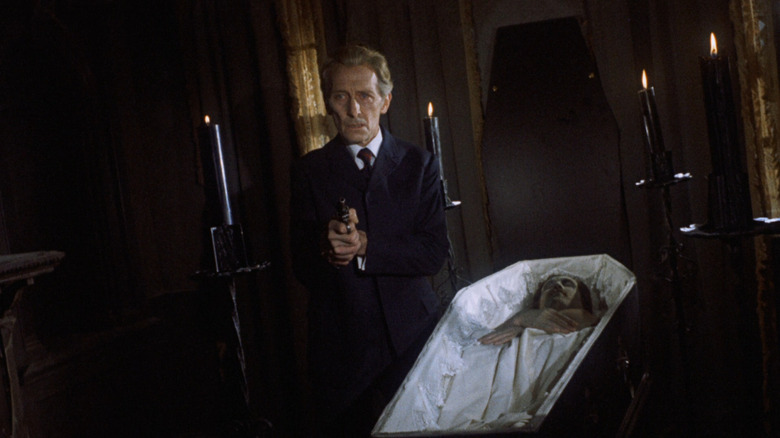
The wraparound: "Asylum" might be considered the outlier of this film crop in its premise, which delivers each segment story via its raving survivors, all patient at an grand, isolated asylum "for the incurably insane." To secure a position as the new doctor there, Dr. Martin (Robert Powell) arrives and is given a test: interview patients and determine which is the psychotic former head of the asylum.
Why it's essential viewing: "Asylum" is a well-oiled product of the Amicus anthology machine; its July UK premiere arrived only three months after shooting wrapped. Roy Ward Baker had the bona fides to helm the picture, as it was his adaptation of BBC's "Quatermass and the Pit" series that became the launchpad for Hammer Film Productions' ascent throughout the 1960s and 70s. Favored Rifftrax target Milton Subotsky produces with a script from "Psycho" scribe Robert Bloch, who adapts four of his own short stories.
Among them, "Weird Tailor" stands beyond the EC Comics-siphoned tales for its largely innocent protagonist Bruno (Barry Morse), an elderly tailor whose debts threaten his livelihood. Peter Cushing gets complex as a customer who arrives to Bruno's shop with an unorthodox order for a suit to be sewn during witching hours only. Bruno desperately accepts, and when the commissioned suit is finally put to use, Doug Gamley's score gallops into gear with horns loud enough to make you forget that you knew of Bruno's assured survival going in.
"Asylum" would be a notable stop along the way of the Me Decade's indulgence in the inmates-run-the-asylum subgenre of the psycho-movie. The end of the '70s would see distrust in psychiatry via Stacy Keach's unorthodox therapy in "The Ninth Configuration," and had a foothold in the Oscar-winning "One Flew Over the Cuckoo's Nest" and William Friedkin's "The Exorcist." "Asylum" remains a blind spot in that subgenre for many.
The Vault Of Horror (1973)
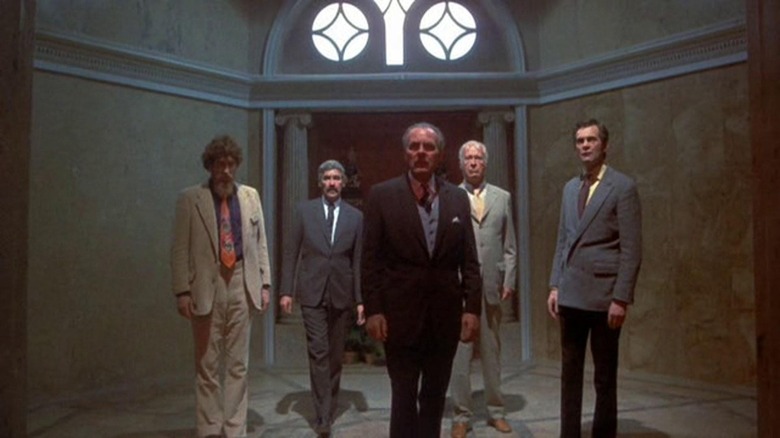
The wraparound: Aboard a descending elevator, five men (Daniel Massey, Terry-Thomas, Curd Jürgens, Michael Craig, Tom Baker) meet for the first time. At their destination -- a fancy underground lounge room -- the drinks and stories flow as each man tells of his recurring nightmare.
Why it's essential viewing: Another Roy Ward Baker special, "The Vault of Horror" showcases several stories written by producer Milton Subotsky himself, culled largely from the EC-based "Tales from the Crypt" comics of the 1950s. It's certainly the bloodiest of the lot; a man's jugular is punctured in one segment (it's blacked out if you have a namby-pamby US release of the film), and a domineering husband takes a hammer to the dome onscreen. The majority of the stories observe a classic plot seen in the likes of "Tales from the Crypt's" skin-melting episode "Forever Ambergris" and Stephen King's "Creepshow" segment "The Lonesome Death of Jordy Verrill," of ambitious men who get their hands caught in the cookie jar, usually by the cardinal cosmic horror sin of messing with otherworldy things man can't comprehend.
The highlight story doesn't come from the "Vault of Horror" EC pool, but from its early-1950s sister line "Shock SuspenStories." "The Neat Job" stars Terry-Thomas (the gap-toothed Lt-Colonel J. Algernon Hawthorne of "It's a Mad, Mad, Mad, Mad World") as the neurotic and neat Arthur Critchit, who takes Eleanor as a trophy wife. Eleanor is played by Glynis Johns, who belted out "Sister Suffragette" as Winifred Banks in Disney's "Mary Poppins," and her character is no less put-upon in "Asylum." The relatively younger wife is expected to keep a tidy home, but hubby's obsession drives her to the edge of sanity. Freddie Francis' absence is felt in one of the more uneven but just as enjoyable anthologies.
Read this next: 14 Horror Movie Flops That Became Cult Classics
The post The Daily Stream: These Amicus Anthologies Are A Must-Watch Marathon For Film Buffs appeared first on /Film.
Elon Musk’s Twitter Silence Is Deafening After 10 Million Users Ask Him To Step Down

SpaceX and Tesla chief Mr. Elon Musk seems to have taken a break from Twitter after his latest poll saw a large majority of users advise the billionaire to step down as the company's head. Musk, who bought Twitter earlier this year for an eye watering $44 billion, aims to transform the site as a global exchange for free ideas - something he believes is essential for his company SpaceX's plans to make humanity an interplanetary species. However, his role at Twitter might come to an end soon, at least when as far as daily operations are concerned, should he follow through with the poll that ended earlier today.
Elon Musk Still To Confirm Whether He Will Step Down As Twitter Head After Followers Advise Him To Do So
Mr. Musk's brief role at Twitter has seen him become the center of controversy once again. In all fairness, Twitter has perhaps been the most controversial site in American politics to late, surpassing the outrage generated by its rival Facebook in the aftermath of the Cambridge Analytica scandal.
Since he took over, the executive has reinstated a host of different Twitter accounts which previous the previous administration banned. The most notable of these is the account of former President Donald Trump, who had resorted to setting up his own social media platform to communicate with his followers after Twitter suspended him.
However, Musk, who has so far been resilient in the face of relentless and often brutal criticism, seemed to have a change of heart after the FIFA World Cup final in Qatar yesterday. Rumor has it that the executive met with high powered investors on the sidelines on the sidelines of the final yesterday, and the interactions were not pleasant. Of course, neither Musk nor the investors have confirmed this, so do take this bit of speculation with a grain of salt.

Musk's $44 billion Twitter takeover has been funded partly by debt taken out by the company itself and partly by the Saudi prince Talal Al-waleed's $1.4 billion and roughly $400 million from the Qatari sovereign wealth fund. Before the deal, Musk was already Twitter's largest shareholder after he managed to buy a 9.1% stake in the company.
After attending the World Cup final, Musk made two critical tweets - both of which are crucial in Twitter's daily affairs The first saw the executive announce that he would not make any significant policy changes at the company before holding a vote. The second saw him ask his followers and everyone else to vote if they would like him to step down as Twitter's de-facto head. Of course, whether his meeting with the investors in Qatar influenced the tweets is conjecture and is unsupported by any direct causal link.
The poll came to a head earlier today when millions of users voted for Musk to step down. The final statistics show that 17.5 million users voted, out of which 57.5%, or roughly 10 million, wanted Musk to step down. His very decision to create a poll for this act started a trend on Twitter which was titled "DO NOT STEP DOWN". As of the time of writing, 19,500 tweets are part of this trend, which is relatively low compared to the 'Yes' votes received by Musk.
Crucially, Musk is still to acknowledge the results of the controversial poll. His last tweet was 18 hours back, a relatively long period for the executives who often takes a break from tweeting only when he has to sleep. Musk has also raised concerns about the difficulty of finding the right person to run Twitter, and has questioned those asking him for the role if they would still want it had they invested their "life savings" in the company.
The post Elon Musk’s Twitter Silence Is Deafening After 10 Million Users Ask Him To Step Down by Ramish Zafar appeared first on Wccftech.
9 Ways to Give Your ‘Performance’ Oatmeal a Competitive Edge

Oatmeal is one of the great underrated foods for athletes, whether you’re a runner, a weightlifter, or just somebody who wants a filling breakfast before hitting the gym. If you want more whole grains or fiber in your diet, congrats—oats have plenty. If you need carbs to fuel you, oats come through there, as well. And…
Here’s Your Year-End Financial Checklist

The end of the year is always a time for reflection, and your personal finances are no exception. Even in a year marked by record-high inflation, there’s a good chance your finances aren’t as bad as you might think. But as 2022 winds down, it’s the perfect time to conduct a year-end review. Using the buckets below,…
IRS Accidentally Releases 112,000 Taxpayers' Private Data Again
Read more of this story at Slashdot.
A fan reverse-engineered 1995's 'Star Wars: Dark Forces' to make it easier to play on modern systems
By modern standards, 1995's Dark Forces doesn't look like much, but it's rightfully considered one of the more important Star Wars games ever released. Not only did it introduce important technical innovations to the first-person shooter genre, but it also went on to have an outsized effect on later Star Wars canon and spawned the Jedi Knight series. However, like a lot of games from the mid-'90s, revisiting Dark Forces can be challenging. Before today, your best bet was to buy a digital copy of the game from either Steam or GOG and use DOSBox to emulate it on a modern computer. Dark Forces is one of the easier games to get running on DOSBox, but the software can be intimidating if you've never used it before.
Enter The Force Engine. The project is primarily the work of LuciusDXL, who spent three years reverse engineering LucasArts' proprietary Jedi Engine to make the two games that were built with it — Dark Forces and 1997's Outlaws — easier to run on modern systems. With version 1.0, TFE is compatible with both the GOG and Steam versions of Dark Forces. Once you've installed the software, it will automatically detect the game's executable, and you can start playing without needing to do things like adjusting cycles in DOSBox.
What's more, it adds a handful of features to make it easier to appreciate Dark Forces in 2022. One big addition is support for modern widescreen resolutions, so you don't have to play the game at its original 320 by 200 resolution. Other optional quality-of-life improvements include full mouselook support and a new save system that allows you to make quicksaves. If you're a fan of Outlaws, LuciusDXL says they're working on adding support for the cult classic shooter as part of TFE's version 2.0 release. While there's no release date for that yet, LuciusDXL estimates it won't take them nearly as long now that they've gone through the process of reverse-engineering Dark Forces.
John Lithgow Purposefully Bombed His Joker Audition For Tim Burton's Batman
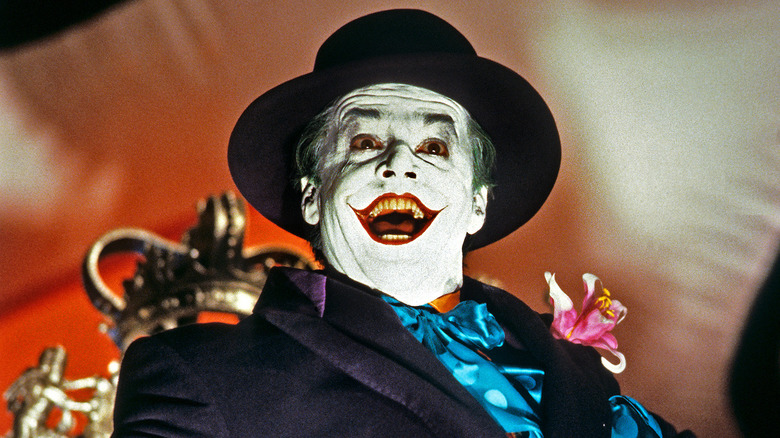
There's a pretty easy argument to be made that the Joker is the most iconic comic book villain of all time. Certainly, he's one of the most easily recognizable, especially after an Oscar win for the late Heath Ledger and a nomination for Joaquin Phoenix for their respective performances in the role. Still, as great as Ledger and Phoenix were as the Clown Prince of Crime, for some fans no one will ever match Jack Nicholson's iconic turn in Tim Burton's 1989 film "Batman."
Nicholson's performance was so memorable that it's become one of his signature roles, alongside McMurphy from "One Flew Over the Cuckoo's Nest" and Jake Gittes from "Chinatown." Because Jack was so good, it's hard to imagine that another venerated actor was originally targeted for the role: John Lithgow.
That's not the only way the film could have turned out differently, either, as the original intention was to have "Gremlins" director Joe Dante at the helm. It was Dante who wanted Lithgow as his Joker, but even after Burton came on board, he was keen on bringing in the Emmy-winning and Oscar-nominated actor to talk about the part. What happened instead was that Lithgow ended up talking himself out of the running.
Self-Sabotage And A Whole Lot Of Regret

In the context of the 1980s, you can kind of forgive John Lithgow for intentionally bombing his audition. This was well before the recent explosion of superhero movies, and in 1989 they were far from being as mainstream — and high quality — as they are now. Two of the comic book movies released shortly before "Batman" were "Howard the Duck" and "Superman IV," so it's hard to really blame Lithgow for not anticipating the cultural significance Burton's film would take on. As Lithgow told Vulture in a 2017 interview:
"I have never told anyone this story, but I tried to persuade him I was not right for the part, and I succeeded. I didn't realize it was such a big deal. About a week later I heard they were going after Robin Williams and Jack Nicholson."
And it wasn't just Burton whom Lithgow declined for the part, either. Even when Dante was still in line to direct, Lithgow turned it down — a move he now regrets:
"I was doing 'M. Butterfly' on Broadway and it was an exhausting show. It would have meant leaving that show and going right into a movie, and I said, 'I just don't think I can'. How about that for stupid? Actors are not necessarily smart people."
In the end, things probably worked out best for all parties involved (except maybe for Lithgow's bank account). Nicholson turned in a legendary performance, and Lithgow has continued to enjoy a busy and celebrated career. Of course, seeing his calmly menacing work as the Trinity Killer in "Dexter" (a role he also nearly passed on) certainly makes you wonder what might have been.
Read this next: Every Tim Burton Film Ranked From Worst To Best
The post John Lithgow Purposefully Bombed His Joker Audition For Tim Burton's Batman appeared first on /Film.
Every Way Avatar: The Way Of Water Plants Seeds For The Upcoming Sequels
This article contains major spoilers for "Avatar: The Way of Water."
It's been 13 long years, but "Avatar: The Way of Water" has finally shown us what filmmaking wizard James Cameron was up to all of this time. The result is a visually remarkable sci-fi adventure that greatly improves upon its predecessor's missteps while making a few of its own. Cameron has been so entrenched in bringing the world of Pandora alive in new and exciting ways, and it shows. You feel as if you have been submerged in the most beautiful waters ever put on the screen.
"The Way of Water" is also front-loaded with characters, both new and old, whose emotional journeys fit alongside Cameron's groundbreaking visual mastery quite nicely. Between the humans, the Metkayina Na'vi, and the Recoms, there are a lot of folks to keep up with, in addition to questions that aren't entirely answered. Although "The Way of Water" poses all of these loose ends, the film's core strength is in its ability to tell an emotionally fulfilling story that stands on its own ground, while arousing sequel curiosity in an organic manner.
Cameron has fully immersed me in the plights of Pandora, and I'm excited to see what he has coming up next. He's talked about wrapping things up in an "Avatar 3" if need be, but after seeing him pull off the impossible yet again, he's got the traction to go through with a fourth and fifth film. "Avatar: The Way of Water" leaves plenty to be further expanded upon, so let's look at some of the dangling threads.
The RDA Strike Back
Where the ending of "Avatar" showed the Omaticaya Na'vi sending the destructive humans of the Resources Development Administration packing, "The Way of Water" ends with the returning forces still stationed on Pandora. They took a pretty nasty hit with the whaling ship, which of course sends a message that the Metkayina Na'vi aren't going down without a fight. But considering the RDA still has its new base of operations intact, the chance of retaliation is very likely.
As the sequels present an opportunity to explore further reaches of Pandora, it also gives the humans time to lick their wounds, restrategize, and attack. This is hardly the last we've heard of them. In "Avatar," the RDA funded the mission based on mining an extremely valuable substance named Unobtanium. Although "The Way of Water" shows a group of Tulkun hunters extracting a yellow brain substance called Amrita, which supposedly stops the aging process, the reason for the RDA's perseverance is based on a bigger mission at hand.
An Almost Uninhabitable Earth
At the top of "Avatar: The Way of Water," we learn that the RDA has returned to Pandora in full force, even setting a base named Bridgehead City. Edie Falco's General Ardmore talks about how Pandora has been targeted as the prime location for full-scale colonization. The only time we've seen Earth in this series is through a four-minute prologue from the Collector's Extended Cut of "Avatar," which shows Jake prior to his cryosleep awakening. It looks like something out of "Blade Runner" and "Black Mirror," where the world is illuminated not through the planet's stunning natural environment, but through an array of advertisements in bright neon lights. There's even a brief background news clip in Jake's apartment that talks about bringing tigers back into existence through cloning.
Of course, this tells us many things, most notably that when we last saw Earth in the year 2154, they had lost a number of species. Who knows what other natural resources they've depleted in the following 21 years? The planet isn't sustainable anymore, so it doesn't look like the RDA is going anywhere. Given that James Cameron has a number of sequels planned out, it wouldn't surprise me if the humans called in for their own reinforcements, lest they succumb to the environmental squandering of their own making.
The Mystery Behind Kiri's Conception
Sigourney Weaver playing a teenage version of her Na'vi self sounded like the kind of ridiculous decision that only James Cameron would make, but it shockingly works. What we do know about Kiri, the adopted daughter of Jake (Sam Worthington) and Neytiri (Zoe Saldańa), is that she was conceived through the Na'vi body of Dr. Grace Augustine (Sigourney Weaver) that they kept in an Amino tank.
If you're asking yourself how that's even possible, especially since Grace died in the first film before she could transfer her consciousness into her Avatar body, then Cameron doesn't exactly give you the answers you may seek. Kiri is shown connecting with the environmental elements of Pandora — even more so than some of the other Na'vi. It's implied that she is intrinsically tied to Eywa, as she says she constantly feels her presence.
Na'vi Grace provided a vessel for a natural birth, but the question remains of how Kiri came to be inside her to begin with. Was Grace pregnant prior to her death, or was this Eywa pulling an Anakin Skywalker miracle birth? It wouldn't entirely surprise me if Cameron is holding back another parentage reveal for a sequel down the line, but I'm leaning more toward the idea that the free-spirited Kiri is the result of Eywa's meddling.
Lo'ak: The Tulkun RIder
Stranded among the outer reefs, Lo'ak (Britain Dalton) is nearly devoured by a massive sea predator, before being rescued in the nick of time by a Tulkun, which can be best described as a mighty whale-like creature. Payakan easily becomes one of the standout stars of the film, not only because he's so beautiful, but because of his strenuous bond with Lo'ak. He was ostracized from the Tulkun because he fought back when the RDA murdered his kind, brandishing him as a killer. Lo'ak, however, doesn't see the callous murderer that the Metkayina believed him to be.
Throughout the course of "The Way of Water," the pair work together in order to take down the RDA's latest attack on the Na'vi. Payakan is injured in battle, but it's safe to assume that his connection with Lo'ak is still there. The sequel titles are subject to change, but at this moment, the fourth film is called "The Tulkun Rider," which raises an eyebrow now that we actually know what a Tulkun is. "The Way of Water" is all about the old guard paving the way for the next generation, and with that, it wouldn't surprise me if Cameron has a bigger plan in store for the Sully middle child and his space whale buddy.
Spider's Daddy Issues
Where Kiri's lineage is still up in the air, "The Way of Water" revealed how Spider (Jack Champion), a human child who grew up on Pandora because he was too young for cryosleep transport, was in fact the offspring of Col. Quaritch (Stephen Lang). Seeing as he was the result of the original Quaritch, it takes a moment for his Recom Avatar to make the connection, but once the dots come together, he utilizes it as an excuse to extract information out of his son.
For the most part, Recom Quartich is just as corrosive a presence as his human predecessor, but there's a difference this time around, as Spider attempts to teach him the Na'vi way. Whether it's securing an Ikran or learning to speak the language, there is a complicated uncurrent of familial bonding between them. In the finale, Spider contemplates leaving his Recom father to drown in the RDA wreckage.
Against his better judgment, Spider saves Quaritch. The kid is offered to go with him, but Spider angrily leaves him behind to go be with the Sullys instead. Seeing how closely they bonded throughout the course of "The Way of Water," this is far from the last time we see them interact. I'll be very curious to see if the sequels show Quaritch going back to the RDA, or attempting to find his own peace on Pandora.
The Sully Family Officially Become Metakayin
When the Sully family arrives at the reefs of the Metkayina clan, they're reluctantly offered a place to stay. "The Way of Water" then shows them adjusting from how they used to do things with the Omiticaya, and all of the melodrama it entails. The blending of two Na'vi clans leads to conflict, especially among the children, which makes it much more difficult to adjust to a new way of life. Jake's fugitive status from the RDA causes concern among the Metkayina that the battle will be brought to them.
Their worst fears are realized when Quaritch's Recom team is able to track him down, bringing a war party to the Metkayina reefs. After an explosive finale that takes the life of Neteyam (Jamie Flatters), the eldest Sully child, everyone kind of realizes that the human invasion is coming regardless. The battle is won, but the war rages on. With that, Tonowari (Cliff Curtis) and Ronal (Kate Winslet), the head couple of the Metkayina, accept the Sully family as one of their own.
Cameron's planned sequels will likely show more Na'vi tribes throughout the luminescent world of Pandora through them. After spending the whole movie on the run, the Sullys now have a real home, which means that not only will they form a new sense of community with the Metkayina, but we'll also get a greater insight into the clan's members as well.
"Avatar: The Way of Water" is now playing in theaters nationwide.
Read this next: Avatar: The Way Of Water Trailer Breakdown: A Family Affair
The post Every Way Avatar: The Way of Water Plants Seeds for the Upcoming Sequels appeared first on /Film.
Winter Sale Interview: how GOG makes games last forever
Even for those of you who have been with us since day one, the routine of acquiring and fixing games by GOG may be shrouded in mystery. That’s why on the occasion of our Winter Sale’s Classics Day, we’ve decided to shed some light on the whole process. To do that, we’ve asked a few questions to some of the most experienced members of our team.
So, how do we select the classic titles that we would like to offer gamers? Are there situations when the owners of the classic games’ copyrights approach us sooner than we approach them?
Marcin Paczyński, Senior Business Development Manager at GOG: We usually use our best judgment. Many of us at GOG are old-school gamers so we’ve played most of the classic games that we are now trying to get for our users (and for ourselves, of course). We also use our community Wishlist and various other means to scout for new content. The rights-holders rarely reach out to us first, but it does happen from time to time.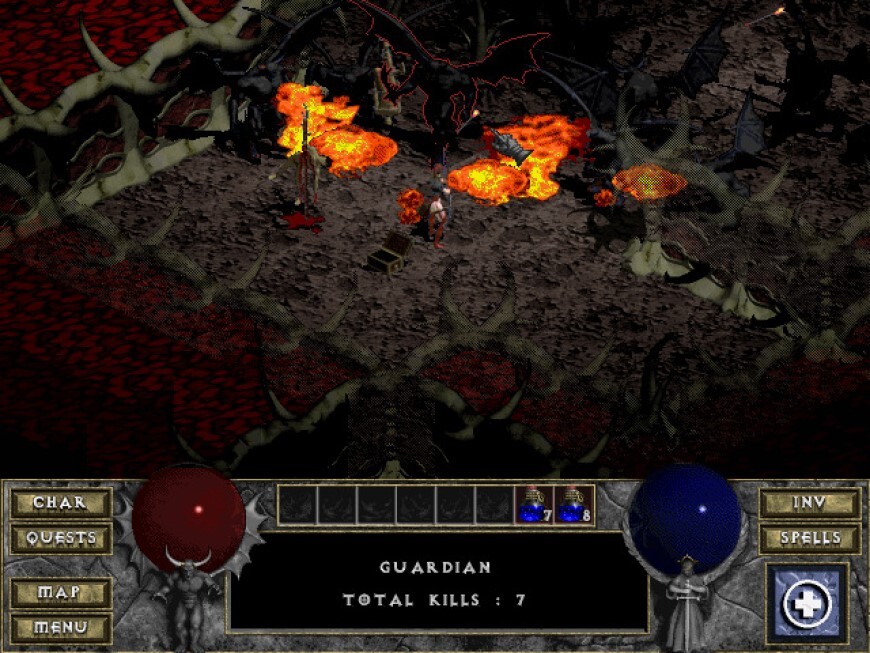
Sometimes the long-anticipated titles (for example missing parts of a classic series) arrive at GOG with considerable delay or do not appear in the store at all. What are the most common reasons for much-requested titles not being available?
For newer games, it's always the publisher's decision on which platforms they will be releasing their titles. There are many reasons why some of them get delayed on GOG or are not released at all. One of the major ones is that GOG is a DRM-free platform meaning that all our games (besides online-only games which we discussed in GOG Update #5) are playable while offline. For some publishers, releasing their new game without copy protection software still seems to be somewhat risky.
As for the classic releases, things sometimes get even more complicated. That’s because our partners need to make sure that they still have publishing rights, IP rights, code rights, music rights, etc, to the titles in question. Of course, we do our own research, and we try to help our partners in shortening this process as much as we can. Yet, in the end, it is them who need to find and evaluate sometimes decades-old contracts.
Unfortunately, it often turns out that some of the rights have expired or were transferred to someone else. If such a thing happens, then the whole process can get exceptionally complicated and long-drawn, sometimes even practically impossible to finish successfully.
In general, we use our Wishlist as a guide to prioritize the titles that are most demanded by gamers. For many classics, we manage to succeed and bring them back, and for the remaining ones – the fight continues!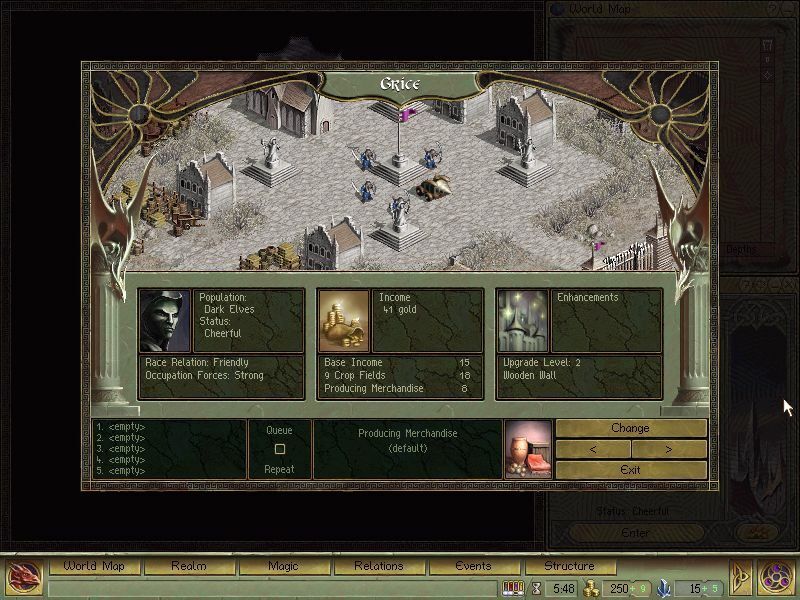
What does, in short, the fascinating process of preparing a classic game to run on new computers look like?
Anna Grodowska, Technical Producer at GOG: Well, obviously the first move for us is to get “inside” the game and remove its Digital Rights Management feature (DRM in short). The next step would be a complex evaluation of how to make a specific title run on modern computers. It’s all about creating a list of potential problems we might have to delete/fix in order for the game to work as well as it would on older, obsolete machines.
Sometimes it’s during this second step that we have to fix some problems and dig deeper to find new ones. For example, if the game does not run at all, we must first do our best to launch it so that we can examine how other features like 3D renderer, audio system, or LAN multiplayer may work. Part of this process is examining the technical possibilities of potentially expanding the functionalities of the title without, of course, making changes to its gameplay. For example, sometimes we make it so that the game can support wide-angle screens, high resolutions (1080, 4K, 8K), or new controller types.
After the evaluation part, the time comes for fixing the problems themselves. Since in 99% of cases we don’t have the game’s source code itself, we usually resort to the good old technique of reverse engineering. We also use all sorts of debuggers, monitoring devices, and tens of other tools, including virtual machines and hardware that dates to the times when the particular game was released.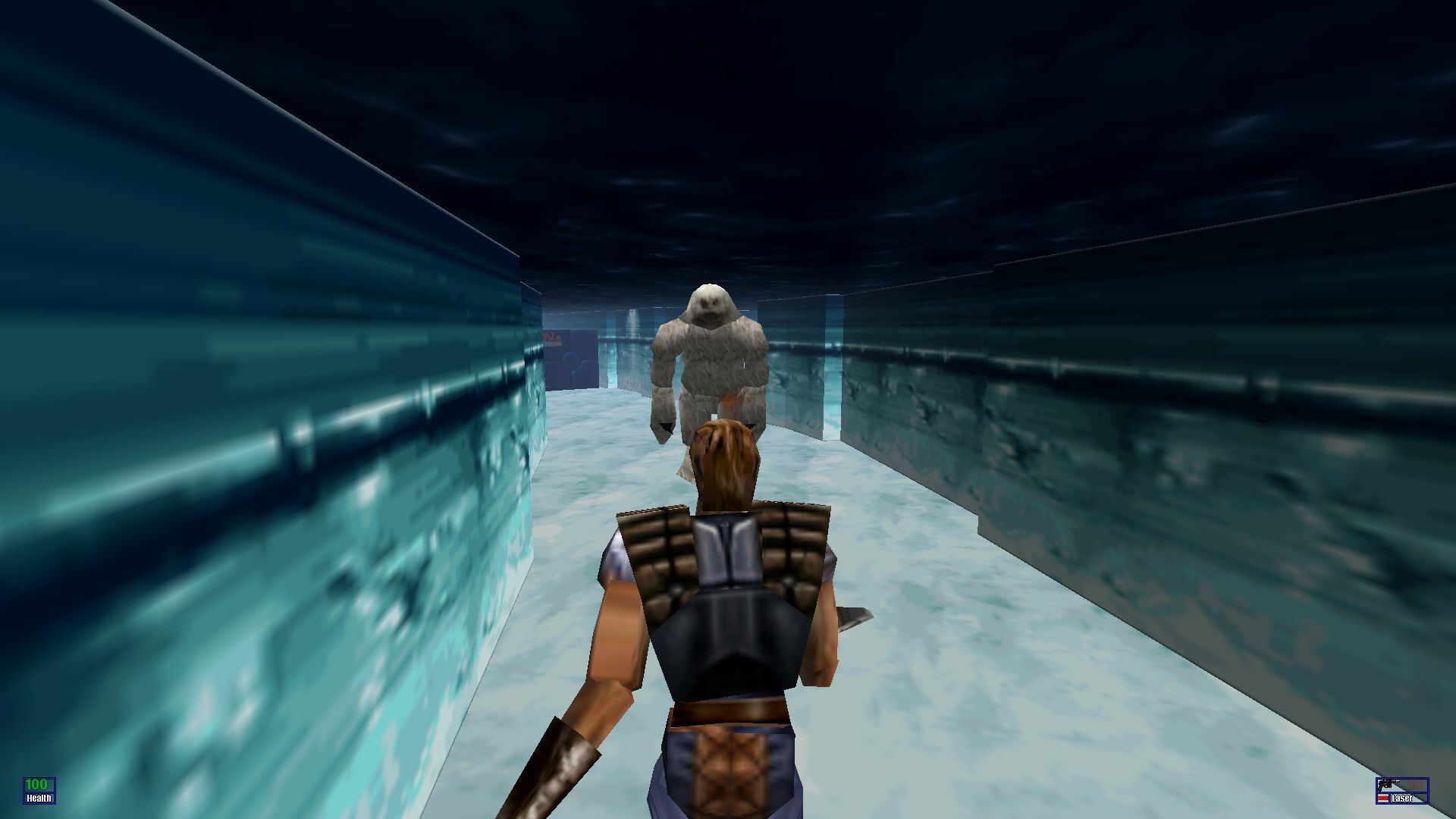
Which classic titles were the most challenging to revive and why?
We have had quite a few of those, Star Wars: Shadows of the Empire and Indiana Jones and the Infernal Machine are the first that come to my mind. Two issues contributed to this fact. First of all, we encountered many small technical obstacles while working on these titles. Apart from that, the wrappers used to emulate old-school interfaces we had back when working on mentioned games have proved to be quite obsolete.
To make these titles work, we had to put in a tremendous amount of work. Yet, mark my words, the satisfaction that came along with it was very rewarding. The experience we’ve earned on bringing these two games to modern computers and the tools we utilized then also became very beneficial for hundreds of our future projects.
Today, of course, our situation looks very different. We already possess many useful tools for our work that we’re still updating and improving them. Thinking ahead, we already test tools that we’ll need in a few years and will be useful to us for the next decade or so.
Apart from the obsolete interface problem I mentioned, the games’ concurrency also poses a challenge from time to time. For example, Hidden & Dangerous wasn’t a very problematic game overall, yet it had one irritating issue. Once every several dozen minutes while playing the game you could hear a very loud noise from the speakers accompanied by an irritating white noise that could very well give the gamer a heart attack.
Since this problematic sound could not be played ad-hoc, we had to simply run the game and wait until the problem arises. At the same time, we were watching our tools working in the background and listening to the monotonous barking of a dog (the Velke Gradiste level of the game) sometimes for 10 minutes and sometimes for as much as 3 hours. Needless to say, although we managed to fix the problem eventually, some of us hear the barking of that virtual dog even to this day!
The underlying issue has proved to be a small oversight on the part of the game’s creators and the lack of synchronization between threads that fought over the same sound buffer.
As you can see, making games last forever is a process that requires both patience and skill. For almost one and a half decades, we at GOG put a lot of effort into bringing classic games back into your hands. On the occasion of Good Old Games Day and our Winter Sale’s Classics Collection in our store, we would like to invite you to check them out, because there’s never been a better time to expand your library with the very best that gaming has to offer!
Every Major Superhero Movie Of 2022, Ranked
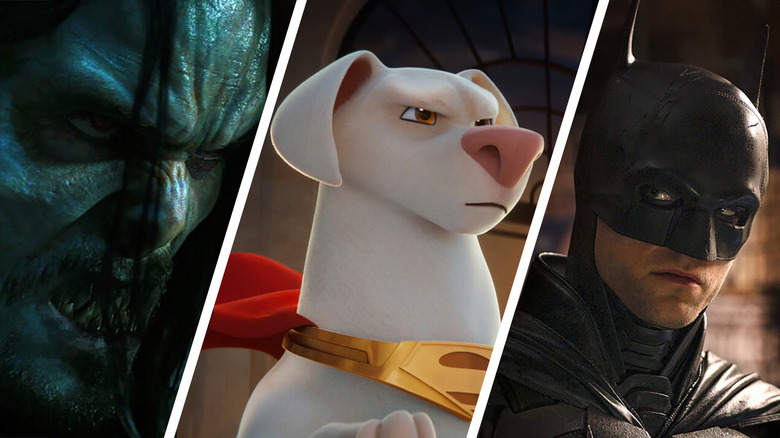
For years now, there's been consistent chatter about whether audiences are experiencing superhero fatigue. Never has that been more relevant than over the past couple of years, when Marvel Studios began inundating us with superhero TV shows on Disney+ that continue to expand the canon of the Marvel Cinematic Universe alongside the three or four big-screen endeavors hitting theaters each year. Meanwhile, on the DC Comics side of things, fans have grown tired of the rigamarole being played with the continuity of the DC Extended Universe, whether in the form of cries to restore the Snyderverse and release "Zack Snyder's Justice League," or demands to move away from an interconnected universe and embrace the darkness of Todd Phillips' "Joker" with movies that aren't trying to follow in the footsteps of Marvel.
In the end, what matters is that we're getting good cinematic stories from the pages of Marvel Comics and DC Comics, and maybe even stories that don't come from the pages of comic books at all. This year brought an interesting assembly of superhero fare to the big screen and streaming services, and if ever there was a year to make a case for superhero movies losing steam, this might be it. More often than not, superhero movies came up short, but there was still greatness to be found, especially when it comes to Marvel and DC fare. From "Black Adam" to "Black Panther: Wakanda Forever," this year's superhero fare runs the gamut of quality and entertainment, so here's our ranking of all the major superhero movies of 2022, including a handful of surprises you might not have thought of initially.
Spoilers follow.
Morbius
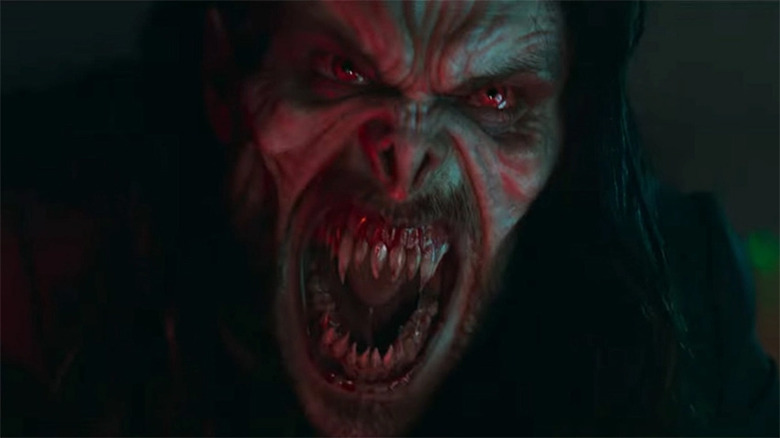
Who's that way at the bottom of the list of 2022's superhero movies? It's Dr. Michael Morbius at your service. While "Venom" may have turned into a surprising box office hit thanks to Tom Hardy's unabashedly silly performance as Eddie Brock and the titular alien symbiote that reluctantly befriends him, Sony Pictures certainly didn't find the same kind of success with Jared Leto's perplexingly serious and painfully predictable take on the living vampire known as Morbius.
"Morbius" feels like a movie that was originally intended to be released in the early 2000s in the wake of the comic book movie boom brought about by "X-Men" and Sam Raimi's "Spider-Man," but an intern lost the film canisters, and it sat in Sony's warehouse for roughly two decades. It's a comic book spin on Dr. Jekyll and Mr. Hyde, which is a common trope among superhero origin stories, but there's nothing refreshing done with it here. When Dr. Michael Morbius' experimental serum to cure his debilitating illness gives him superhuman abilities, it also gives him an unending thirst for blood, turning him into a deadly creature of the night. Of course, Morbius also has a childhood friend Milo has the same illness, and he's so desperate to cure himself that he injects himself with the same serum, and he couldn't care less about the bloodthirst that forces him to kill for sustenance. This will bring the two to superhuman blows, and unfortunately, that's not the only thing that blows.
There's nothing engaging, interesting, or remotely cool about "Morbius." Even the colorful, wispy visual flourishes added to enhance the superhuman movement and flight of Morbius and the cliche villain Milo (Matt Smith, tragically stuck in another franchise that's dead before it begins) can only act as a stylish band-aid on a lethal bullet hole. How can anyone be expected to invest in an anti-hero and villain whose VFX transformations simply make them look like Hot Topic versions of the bad guy from "The Mask" with Jim Carrey? This movie is nothing more than a feature-length music video that could have easily been a production from Jared Leto's band 30 Seconds to Mars. Uninspired, lame, and just plain bad, "Morbius" is far from a living vampire that sucks blood. It's a corpse that just sucks.
Black Adam
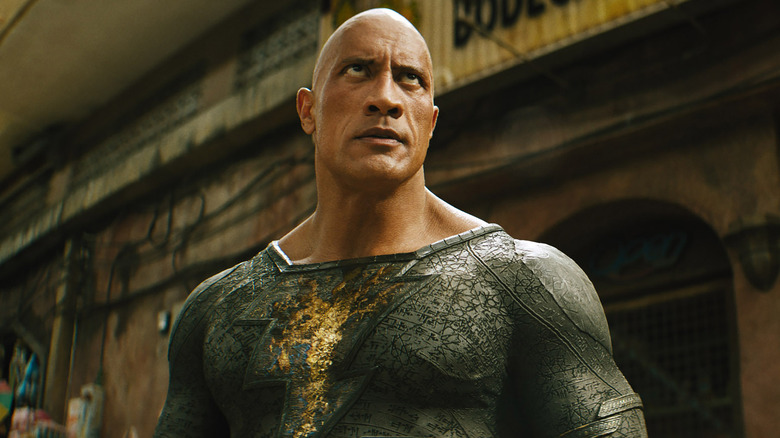
After roughly 15 years of gestating, it's a shame that "Black Adam" couldn't come up with something more impressive. Dwayne Johnson had been waiting to play the DC Comics anti-hero for a long time. In fact, Johnson once had the choice between playing either Black Adam or his adversary Shazam! long before Zachary Levi stepped into the role. Sadly, "Black Adam" arrives after a decade and a half of movies in the Marvel Cinematic Universe, and it doesn't bring any fresh to the table to compensate.
Director Jaume Collet-Serra ("Jungle Cruise," "Non-Stop," "The Shallows") takes the helm of the superhero movie that was famously supposed to change the hierarchy of the DC Extended Universe. What better way to redefine the big screen comic book universe than by starting with a flashback sequence that looks like a poor man's "300," introducing a junior varsity team of superheroes for action fodder in the form of the Justice Society of America, and turning the newly introduced most powerful character in the DCEU into the most uninteresting character in the movie? "Black Adam" does it all by giving us a character who is hellbent on delivering justice to the world that turned against him thousands of years ago. The only problem is there's really no reason to care, and the shoehorned human characters who are supposed to provide some semblance of an emotional core fall horribly flat.
Try as Dwayne Johnson might to make Black Adam work on the big screen, the character is weakened by the fact that he can't embody the actor's natural charisma and likability. While that does allow for some deadpan humor involving smashing holes into walls instead of using doors and a misunderstanding of the concept of sarcasm, it does not make for an interesting lead character. In fact, the Justice Society of America would be the most interesting part of the movie if they weren't relegated to merely being adversaries trying to stop Black Adam. Even then, their introduction feels unceremonious and rushed, and the only one who actually turns out to be a truly compelling character is Pierce Brosnan as Doctor Fate, so of course he gets killed before the end of the movie. Beyond the first action sequence that reveals just how strong Black Adam is as he takes out a team of mercenaries, this movie is about a decade late and millions of dollars short.
Samaritan
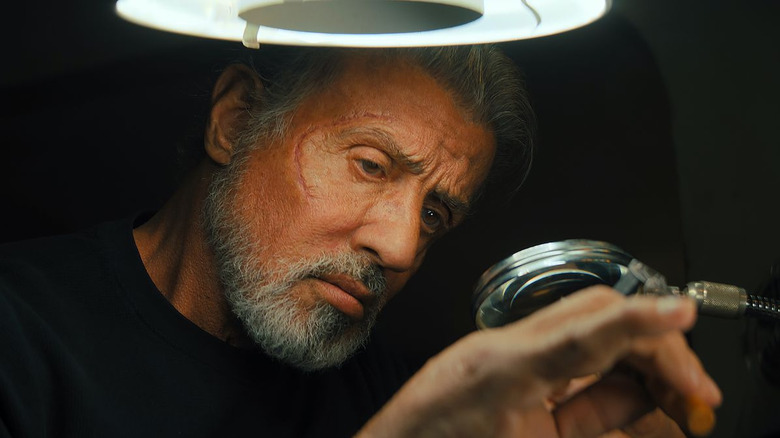
There was a time when Sylvester Stallone would have made quite the comic book superhero. However, when the "Rocky and "Rambo" franchise star was at the top of his game as one of the biggest action stars in Hollywood, audiences were only clamoring for the likes of Superman and Batman, and studios hadn't yet discovered the true box office power of Marvel and DC characters. Stallone has since found his way into the Marvel Cinematic Universe by way of a brief but key supporting role in "Guardians of the Galaxy Vol. 2," but it took a straight-to-streaming movie on Prime Video to turn him into a fully-fledged superhero, albeit one you've never heard of before.
"Samaritan" follows a kid named Sam (Javon Walton) who lives in the rundown part of Granite City, a metropolis that is succumbing to rising crime rates and diminishing hopes. It doesn't help that the city's superhero, known as Samaritan, was apparently defeated at the hands of his sworn enemy and twin brother, appropriately called Nemesis, who died in the process of taking down his powerful sibling. Presumed dead for years, there hasn't been another hero to step up like Samaritan and give people something to strive for. Instead, a criminal leader named Cyrus (Pilou Asbæk) has taken up the mantle of Nemesis again, and he's inciting violence across the city. But Sam may have just found the one man who can stop him: the weathered and aged Joe, who just may actually be Samaritan secretly living in a nearby apartment and working as a garbage man.
As a movie that feels like "Last Action Hero" mixed with "Steel" (yes, the DC movie with Shaquille O'Neal), director Julius Avery ("Overlord") delivers an admirable, gritty action movie that has a vibe straight out of the late '90s. Stallone is perfect for playing the grizzled, presumed superhero. He keeps to himself, but the man who calls himself Joe still has heroic tendencies, no matter how hard he tries to avoid them. Though "Samaritan" could have used a bigger budget and a bit more visual style, there's something thoroughly entertaining about the throwback nature of this movie, right down to the tough teen street gang led by Moises Arias ("Ender's Game"). The movie somewhat fizzles out, with an action setpiece that can't quite muster up a satisfying conclusion and an intriguing twist that doesn't feel like it has nearly as much significance as it should, but it's at least something different among a sea of sky portals, flying final battles, and computer-generated climaxes.
Secret Headquarters
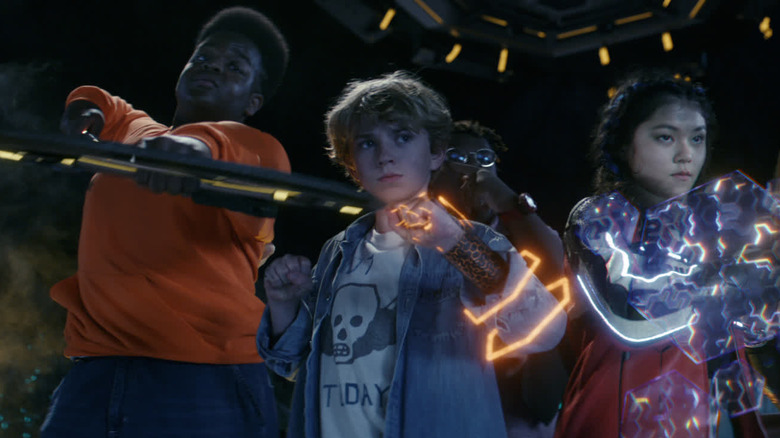
Right now you might be saying to yourself, "What?" No, we're not trying to pull one over on you. "Secret Headquarters" is a totally real movie that came out this year. Starring Owen Wilson and "The Adam Project" star Walker Scobell, the Paramount+ original film focuses on a young teen boy named Charlie (Scobell) who has a frustrating relationship with his father (Wilson), who always manages to have a work emergency when they're supposed to spend time together. Little does Charlie know that his father is secretly the superhero known as The Guard, who has been so effective at saving the world that it's starting to tick off a weapons CEO named Ansel Argon (Michael Peña). When Charlie and his friends accidentally stumble upon The Guard's secret headquarters, they have a little too much fun with his various superhero gadgets, bringing Argon and his team of mercenaries into the superhero's home. What follows is a mix of "Spy Kids," "Sky High" and "Home Alone" with a little bit of "Iron Man" tossed in for good measure.
"Secret Headquarters" is by no means a revelatory superhero movie. It's a little too over-the-top when it comes to some of the kid-centric antics, even if the cast that also includes Keith L. Williams ("Good Boys"), Abby James Witherspoon (niece of Reese Witherspoon), and Momona Tomada ("The Baby-Sitters Club") has commendable chemistry and mostly works, but at least directors Henry Joost and Ariel Schulman know exactly what they want this movie to be. Granted, there are some poorly conceived logistics when it comes to the concept of The Guard himself, especially when it comes to the various gadgets at his disposal and the scope of his power source. Plus, some of the comedy that comes from Peña's villain argon feels a bit forced and out of place. But a kid-driven, live-action family adventure like this is the kind of movie that studios don't make much anymore. If I were a kid, this is a movie that I would watch over and over again. Then I would revisit it as an adult and realize it's not particularly great, but I would probably still enjoy the good times it provided.
DC League Of Super-Pets
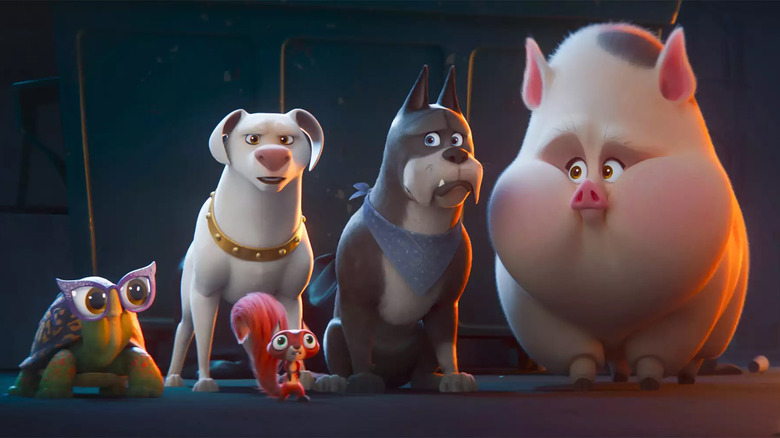
Who would have thought that the animated movie about Superman's super-powered pet dog Krypto and a team of misfit pets would end up being the better superhero movie starring Dwayne Johnson this year? Take the family-friendly humor of "The Secret Life of Pets" and the zany superhero style of "The LEGO Batman Movie," and you get yourself the mostly enjoyable "DC League of Super-Pets."
When Krypton is on the verge of destruction, a baby Kal-El is sent away from the planet just before it explodes, providing Earth with the superhero who the world would come to know as Superman. But in this version of the story, baby Kal-El has a cute little stowaway in the form of a little white puppy who comforts the orphan infant and grows up to become his best friend and a canine superhero in his own right, complete with a cape, freeze breath, laser vision, and all the bells and whistles of being a Kryptonian on Earth. However, Krypto's perfect friendship gets shaken up when Superman (aka Clark Kent, voiced by John Krasinski) decides to marry Lois Lane. But that's not all, because Metropolis is about to get a different kind of shake-up when Lulu, a hairless guinea pig test subject from Lex Luthor's LexCorp labs, gets ahold of orange kryptonite and becomes quite a deadly foe by capturing Superman as well as his friends in the Justice League, all in an effort to dominate the world for her billionaire former owner.
The biggest asset that "DC League of Super-Pets" has is the fantastic ensemble cast. Dwayne Johnson actually works considerably well as Krypto, and there's just enough of Kevin Hart as his foil, an abandoned boxer dog called Ace, who even has a touching, tragic backstory. But honestly, it's the supporting cast that steals the show, including Vanessa Bayer as a potbellied pig named PB, Diego Luna as a wiry squirrel named Chip, and Natasha Lyonne as the endlessly hilarious nearsighted turtle Merton, especially when they all get superpowers of their own. The dynamic between all these animals makes for a lot of fun, including the villainy of Lulu, voiced perfectly by Kate McKinnon, who channels the energy of the latter half of "Pinky and the Brain" for an excellent vocal performance. However, there's a little too much of a contemporary touch regarding pop culture references and gags, especially regarding the movie's soundtrack, and some of the meta sensibilities at play take away from the rest of the movie's cleverness. The only exception to this are some of the bits involving Keanu Reeves as Batman, who deserves his own movie with his new canine companion Ace.
Thor: Love And Thunder
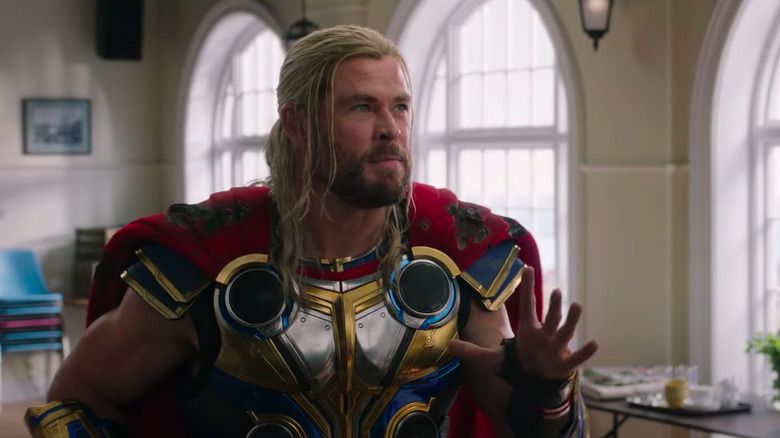
After Taika Waititi reinvigorated the God of Thunder with "Thor: Ragnarok," it felt like the franchise had a new lease on life, especially when you take into account the character's journey across "Avengers: Infinity War" and "Avengers: Endgame." However, Marvel Studios may have been a little too trusting when it comes to giving Waititi free reign to take Thor on his latest adventure.
"Thor: Love and Thunder" finds Chris Hemsworth getting back in chiseled superhero shape as Thor, faced with reuniting with his ex-girlfriend, Jane Foster (Natalie Portman), who has now been imbued with the powers of the God of Thunder, thanks to the reformed shattered remains of Mjolnir. Unbeknownst to Thor, Jane Foster is using the power of the Mighty Thor to keep a terminal cancer diagnosis at bay. At the same time, King Valkyrie (Tessa Thompson) and the people of New Asgard are facing a deadly threat in the form of Gorr the God Butcher (Christian Bale), who is on a mission to wipe all gods from the universe.
Though the fourth film in the Thor franchise brings much of the same wild energy and humor that made "Thor: Ragnarok" such a refreshing piece of the MCU, it also brings a fractured story that lacks focus, poorly utilizes what should be a much more menacing villain, and doesn't do justice to Jane's story, despite being based on one of the greatest comic book arcs in Thor's history. Though Waititi admirably tries to bring Thor and Jane's relationship to the forefront of the story in an amusing and charming fashion, it never quite reaches the significance necessary to make the tearjerking ending land as firmly as it otherwise should. That's not to say the film isn't thoroughly entertaining, because it does bring plenty of laughs, stunning setpieces, and solid action. It just never comes together to be as good as its predecessor, and that's a shame when you have so much talent in front of and behind the camera.
The Guardians Of The Galaxy Holiday Special
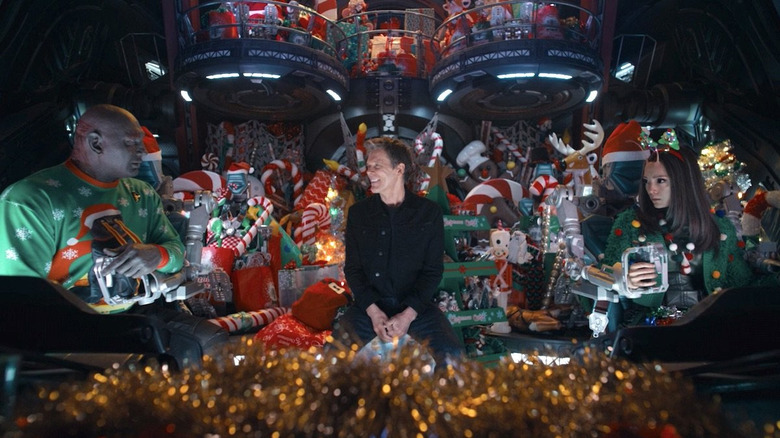
That's right, we're including "The Guardians of the Galaxy Holiday Special" on this list. It might not qualify as a feature-length film, but we're including it in this year's assembly of superhero movies, especially since it's better than half of the actual superhero movies released in 2022.
James Gunn brought Christmas joy to the Guardians of the Galaxy with this 40-minute holiday special that also happens to be a musical featuring some catchy new Christmas tunes from The Old 97s. The filmmaker has always had a genuine reverence for "The Star Wars Holiday Special," and he brought that love to this special presentation from Marvel Studios. Only a ragtag, misfit crew like Guardians of the Galaxy could make a Yuletide program like this work, and the fact that it's actually a canon piece of the MCU that takes inspiration from a great gag from the original "Guardians of the Galaxy" movie only makes it that much better.
Drax (Dave Bautista) and Mantis (Pom Klementieff) try to cheer up a depressed Peter Quill (Chris Pratt), still reeling from the loss of Gamora (Zoe Saldana) in the aftermath of the events of "Avengers: Infinity War" and "Avengers: Endgame." In a stroke of genius, Gunn sends the two back to Earth to retrieve Quill's longtime "Footloose" idol Kevin Bacon, played by the real "Hollow Man" star Kevin Bacon. Sure, it's a bit hokey, but that's exactly what makes it a holiday special. However, because the Guardians spend most of the runtime split up, it does't quite have the same charm as a full-fledged installment of the Marvel franchise where the group dynamic is the driving force of the story. But it still has its heart in the right place with a fair share of funny and heartwarming moments, including a wonderful deepening of the surprisingly touching relationship between Quill and the late Yondu (Michael Rooker). It's a kooky, fun, cosmic, Christmas adventure that could only ever work in the hands of an oddball like James Gunn, and he even manages to get some throwback rotoscope animation in there for a truly retro vibe.
Doctor Strange In The Multiverse Of Madness
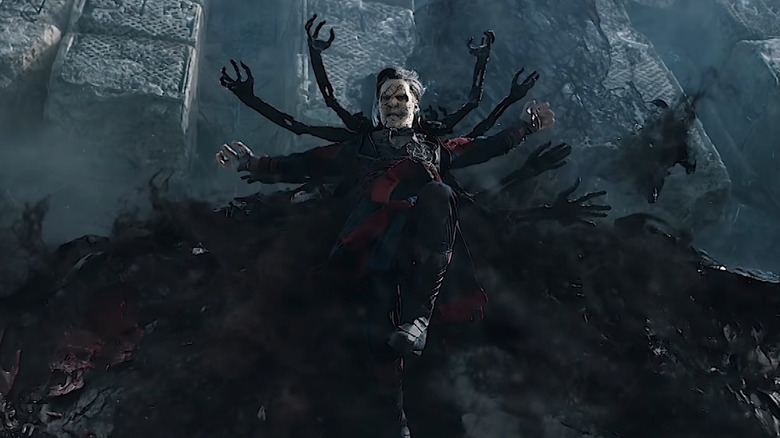
Though some might argue that Phase 4 of the Marvel Cinematic Universe has become a bit of a fractured mess of storytelling, "Doctor Strange in the Multiverse of Madness" gets the honor of digging into the darker side of the multiverse with mostly satisfying results. "Multiverse of Madness" is far from a perfect movie, and it doesn't reach the greatness of "Spider-Man: Into the Spider-Verse," but with director Sam Raimi at the helm, it certainly has style to spare, and it even gives a bit of a backhand to the fan service that Marvel has been criticized for in recent years as the MCU has expanded to include the largest roster of characters a film franchise has ever seen.
Let's be clear, "Doctor Strange in the Multiverse of Madness" isn't without problems, especially when it comes to the 180-degree turn that Wanda Maximoff (Elizabeth Olsen) takes following the lesson she learned in Marvel's "WandaVision" series, not to mention the use of America Chavez (Xochitl Gomez) as more of a plot device for Wanda's villain rather than a three-dimensional character. But the way Raimi brings the multiverse to life is just twisted enough to be entertaining, especially when it comes to having Benedict Cumberbatch playing multiple versions of Doctor Strange.
Sure, the parallel universes that we spend the most time in could have been a little more creative (Green means stop and pizza is balls! Wow!), but "Multiverse of Madness" also has the job of introducing us to the Illuminati, featuring alternate universe versions of familiar characters, such as Captain Carter (Hayley Atwell), Black Bolt (Anson Mount), Professor X (Sir Patrick Stewart), and even the introduction of John Krasinski as Reed Richards. However, all that fan service is given a devastating blow as the Scarlet Witch hilariously kills every single one of them without prejudice. Though the presence of these characters may feel like a tacked-on sequence full of fan service, the fact that Raimi brings them into play just to tear them all down is the kind of twisted fun that makes "Multiverse of Madness" such a rollicking good time. Combine that with the flourishes like the battle with the tentacled, one-eyed monster Gargantos, the cartoonish music fight between Doctor Strange and Dark Strange, and the totally metal mayhem of Dead Strange and a Cloak of Levitation comprised of the souls of the damned, and you've got a sequel that delivers an immense amount blockbuster fun, even if it's in a messy package. It's not called the "Multiverse of Neatness," is it?
Werewolf By Night
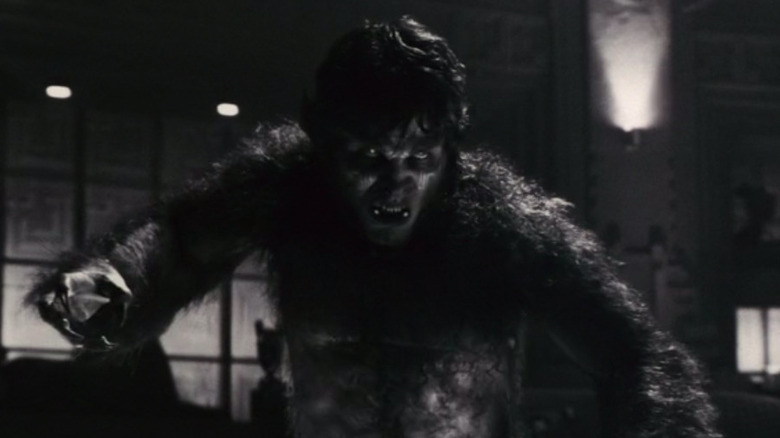
Since we included "The Guardians of the Galaxy Holiday Special" on this list, we have to bring in Marvel's first Special Presentation that arrived just in time for the spooky season this year. "Werewolf by Night" digs into one of Marvel's more obscure comics for a one-shot story that takes inspiration from the classic horror movies of the 1930s and 1940s. With a black and white visual style reminiscent of Universal Monsters movies like "The Wolf Man" and "The Invisible Man," director Michael Giacchino (composer for "Star Trek," "Lost," and "The Incredibles") delivers a contained story that doesn't need the mythology of the Marvel Cinematic Universe to sustain it.
Following the death of the revered Ulysses Bloodstone, five experienced monster hunters, including Jack Russell (Gael García Bernal), are summoned by Ulysses' widow, Verussa, to Bloodstone Manor, where they are instructed to participate in a competitive hunt to determine the new leader who will wield the powerful Bloodstone. Little do they know that Jack actually knows the monster being hunted quite well, and he's actually looking to help the mossy creature escape. But that's not the only secret being held by Jack, who also happens to be a werewolf.
Economical, atmospheric, and thrilling, Marvel's "Werewolf by Night" shows the great potential of stories within the MCU when there aren't any shoehorned connections or fan service to existing characters and elements. There are zero characters in this special we've seen before, and we don't need to know much about them in order to experience a satisfying story. Furthermore, the special also ventures outside of the rather sterile visual style that Marvel Studios has been criticized for over the years, allowing for a little more creativity behind the camera. And if there were ever a case to be made for less CGI and more practical effects, the final werewolf transformation would make for substantial evidence. Overall, this was a fulfilling detour to a new corner of the MCU that demands even more exploration.
Black Panther: Wakanda Forever
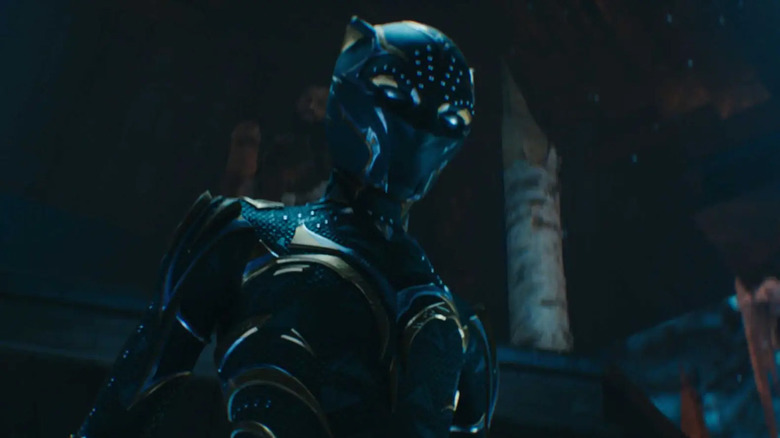
Following the tragic passing of Chadwick Boseman, it's an understatement to say that the "Black Panther" sequel had a supremely difficult uphill battle. Director/writer Ryan Coogler wasn't even aware that his franchise star had been diagnosed with a terminal illness, let alone that he would pass away before cameras even started rolling, forcing a page-one rewrite that would change the trajectory of the Marvel superhero entirely. Miraculously, Coogler crafted a sequel that not only manages to pay tribute to the legacy of Chadwick Boseman, but provides an emotional and cathartic follow-up that allows the entire ensemble cast to grow and fill the gap left by the actor's absence.
"Black Panther: Wakanda Forever" has a lot of moving pieces and a large roster of characters with significant screentime, but it never feels overstuffed or lacks focus. The sequel wastes no time with the heartrending passing of T'Challa, leaving the advanced African nation without its king or legendary protector. But it doesn't rush to push someone else into the suit. In fact, "Wakanda Forever" deserves plenty of credit for being patient by letting T'Challa's sister Shuri (Letitia Wright), mother Ramonda (Angela Bassett in an award-worthy supporting role), and their closest confidantes grieve and slowly recover from this painful development. We see Wakanda truly vulnerable for the first time ever, and it leaves them open to attack from the previously unheard-of underwater nation Talokan, led by the godlike Namor (Tenoch Huerta, in a stirring breakthrough performance).
The beauty of Talokan cannot be understated, and Coogler does a masterful job of turning Namor and his people into a civilization you can empathize with, even when they threaten to wipe Wakanda off the face of the Earth. The escalating tension and intense battles between these two nations make for the best blockbuster action in any superhero movie this year. "Wakanda Forever" again gets an assist from a breathtaking score by Ludwig Goransson, who takes the music in hypnotizing new directions to represent the people of Talkokan. There's also the gorgeous cinematography that lets the beauty of both Wakanda and Talokan shine. And that's all before we even mention the introduction of Riri Williams (Dominique Thorne), a character who could easily have been shoehorned into the MCU but actually has an important part to play in helping Wakanda stand up to this new threat.
Making "Black Panther: Wakanda Forever" without Chadwick Boseman was already a tall order, but delivering a sequel that's as good as this after going through such a harrowing development process is truly a miracle. "Wakanda Forever" may stumble a little bit in the third act that has you feeling the nearly three-hour runtime, but the emotional core is strong, putting it on the higher end of Marvel's sequels and easily the best installment of Phase 4 of the Marvel Cinematic Universe.
The Batman
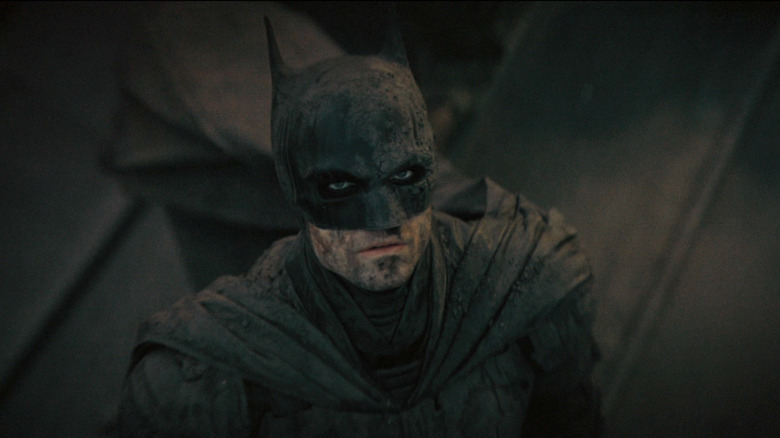
After Christopher Nolan gave us the definitive big screen version of the Caped Crusader with the Dark Knight Trilogy, there was a lot of doubt surrounding a new version of Batman, especially when "Twilight" franchise star Robert Pattinson was announced to put on the cape and cowl. But anyone who has watched Pattinson's career in the aftermath of "The Twilight Saga" knew that the actor wouldn't take on such a high-profile role in a massive blockbuster franchise unless there was something worth sinking his teeth into. That's where "War for the Planet of the Apes" and "Cloverfield" director Matt Reeves comes into play, combining the gritty realism of Christopher Nolan's universe with the pulpy crime of DC Comics and just a pinch of "Batman '66."
Robert Pattinson gives us an emo, alt-rock Batman still coping with the darkness and vengeance instilled in him by the death of his parents, but thankfully, Reeves has the sense to refrain from showing us this in flashback form all over again. It's the kind of Batman who would wallow in grief by punching a hole in the wall while cranking Nirvana in his Walkman headphones, which is exactly why the band's song "Something in the Way" permeates the film's soundtrack, as well as the score by composer Michael Giacchino. This Bruce Wayne has no interest in trying to balance life as a member of high society with his nights spent moonlighting as a vigilante. He's still bitter and angry, and he's taking it out on the criminals terrorizing the citizens of Gotham City each night. But there's a bigger threat that Batman has been blind to thanks to his privileged position in Wayne Tower, and it gives the Dark Knight a new perspective on justice when all is said and done.
With "The Batman," Matt Reeves manages to give us a Batman movie that feels like David Fincher's "Se7en" (and "Mindhunter") but still manages to bring some comic book and noir style to the proceedings, especially when it comes to Colin Farrell's crime boss portrayal of The Penguin and Zoe Kravitz's femme fatale take on Catwoman. Then there's Paul Dano's turn as The Riddler, which is truly chilling as the product of a corrupt contemporary society pushing the underprivileged just a little too far into the annals of a broken, corrupt city government. There's a compelling mystery, a homemade feel to Batman that isn't afraid to linger in the shadows, and a new take on the Dark Knight that manages to feel refreshing despite the fact that we've been inundated with Batman for years now. The Batman is back, and we couldn't be more thrilled to see the signal shining in the sky again.
Read this next: The Best Movies Of 2022 So Far
The post Every Major Superhero Movie of 2022, Ranked appeared first on /Film.









